By Nathan N. Prefer
Despite his nickname, General Henry Harley (“Hap”) Arnold was unhappy. In early 1945 he was having major problems with one of his own special projects, the development of the Boeing B-29 Superfortress strategic bomber, for which he had often risked his career.
The end of the war was in sight, but the Japanese maddeningly refused to concede defeat. What was needed, he believed, was the B-29 to prove its potential by hitting the Japanese Home Islands so hard that the enemy would be forced to surrender without the Allies needing to invade.
Arnold, commanding general of the U.S. Army Air Forces, was born in Gladwyne, Pennsylvania, in 1886. A doctor’s son, Arnold had been commissioned into the infantry from West Point in 1907. There he earned the nickname “Hap” because of his bright disposition. He quickly became interested in aviation, and in 1911 had taken flying lessons from Orville Wright, becoming one of the very first Army pilots. He soon became well known in aviation circles, earning several decorations and trophies for flying. During World War I he had overseen the Army’s aviation program and was a strong advocate of Brig. Gen. Billy Mitchell’s demands for greater American air power.
After graduating from the Command and General Staff School in 1929, he was given command of the Army aviation operations at March Field in Riverside, California, where he was awarded his first star. Three years later, Arnold was a major general and Chief of the Army Air Corps (later Army Air Force).
After the Japanese attacked Pearl Harbor, he was promoted to lieutenant general and retained in command of the Army Air Force. As such, he was included on the American Chiefs of Staff and later the Anglo-American Joint Chiefs of Staff with the rank of four-star general. But by early 1945, he was having problems with the B-29 program—one of his pet projects.
The interim between the world wars had been filled with new military innovations that were strongly espoused by their supporters. The United States Navy was leaving its battleships behind and beginning to build large aircraft carriers carrying greater numbers of airplanes. The U.S. Army was also developing new weapons, including an improved tank and the semi-automatic rifle. And the Army Air Corps was seeking new ways to strike at distant enemies.
To this end, in 1935 the General Headquarters, Army Air Force, was created to lead the still-fledgling Air Corps into the next technological era. Their main job was to build a strategic air force from scratch. Under Brig. Gen. Frank M. Andrews, three airfields were chosen for testing new airplanes. Offensive air operations were believed to be the key to the destruction of an enemy’s air power and basic industries. Planes had to be developed that could carry heavy loads over long distances, be able to defend themselves against enemy air opposition, and strike with precision bombing.
By 1930 the Air Corps already had a 10-year plan to develop such aircraft. GHQ Army Air Force was designed to see that plan to fruition. The plan called for four different bombers to be developed, each one an improvement on the last.
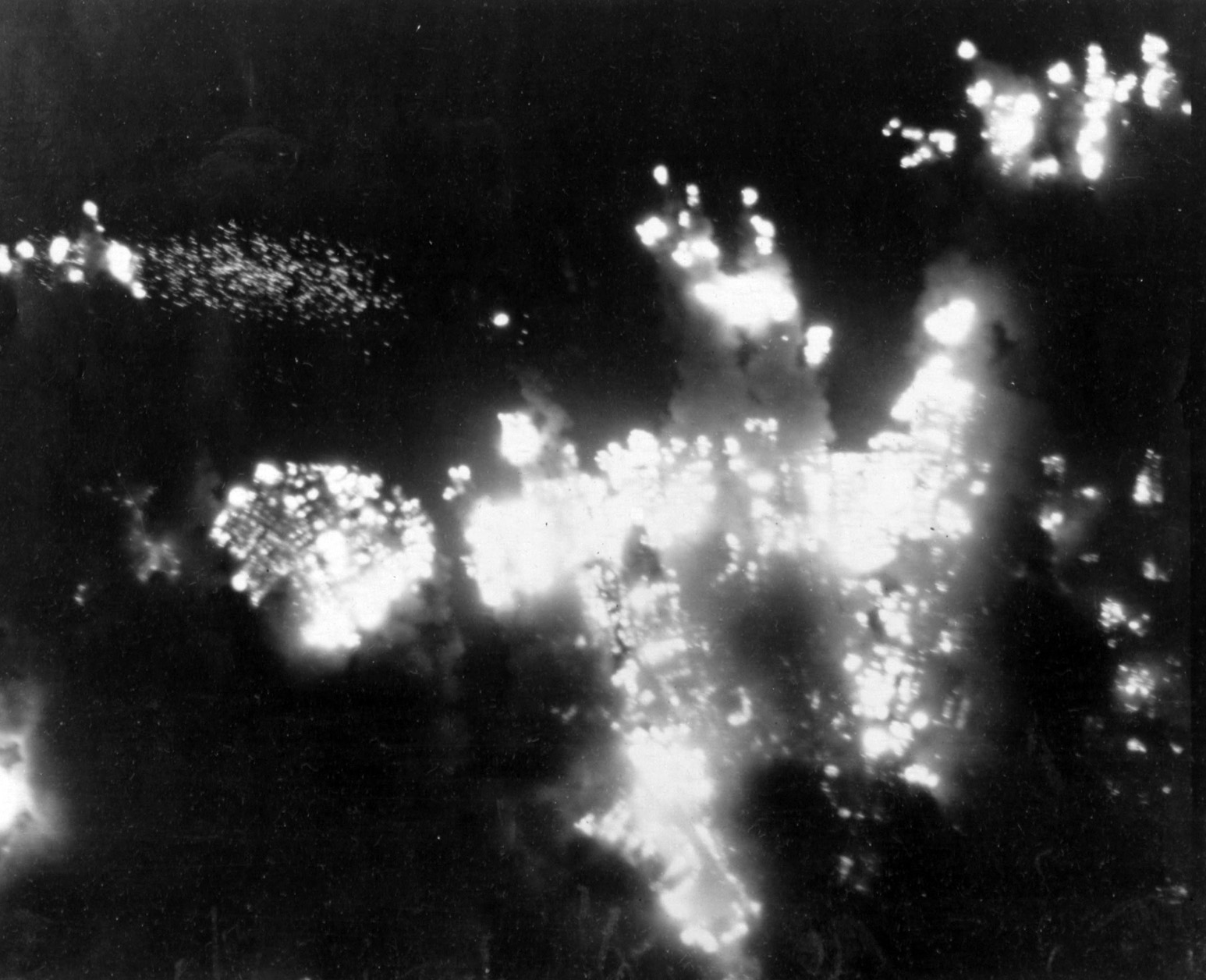
The first to be completed was the Boeing B-17 Flying Fortress heavy bomber. This was followed in quick succession by the XB-15 and the XB-19, neither of which was put into production. Opponents of the expansion of the Air Corps took advantage of each misfortune, crash, or failure to try to cancel the programs. Only one XB-15 was built, and from its difficulties came the improved B-17. The largest test aircraft, the XB-19, was the predecessor to the coming B-29.
It was General Arnold who had come up with the specifications for the heavy bombers. His engineers were told to “make them the biggest, gun them the heaviest, and fly them the farthest.” But time after time, the new Superfortress developed problems, delaying its entry into combat. And each time, General Arnold pushed for the project to continue.
In August 1938, for example, the B-17 project was also having problems, but it was rushed forward because the next model, known as the XB-15, was in even greater difficulty. Its engines had nowhere near the power required for long-range missions and heavy payloads.
Undaunted, Arnold then demanded a larger bomber, known as the XB-19, one that could fly 10,000 miles with an adequate payload. After nine months of work, the Douglas Aircraft Company declared the project unsuccessful and asked to be removed from the development project.
Arnold ordered that at least one such bomber be built, and in July 1941, the one and only XB-19 first flew. It was enormous—by 1941 standards—with a wingspan of 212 feet, a length of 132 feet, and was twice the size of the new B-17. But once again, its engines were inadequate. For Arnold, though, there was now no turning back on the path to bigger and better bombers.
Four aircraft companies were invited to submit prototypes for the new project. Only one, Boeing, of Seattle, Washington, was granted a contract, in September 1940. But Arnold hedged his bets and asked Consolidated Aircraft Company to submit another prototype, which became known as the XB-32, just in case the Boeing version failed to meet Air Force requirements.
Arnold was betting that between the two companies, they could come up with an aircraft of the desired size, range, and payload and, critically, the engines to carry the aircraft successfully.
When Germany attacked Poland in 1939 and it became apparent that America might soon be drawn into the war, a new bomber was requested by Arnold. This one, known as the XB-36, was to have a wingspan of 142 feet, a length of 99 feet, and weigh about 120,000 pounds—twice the weight of the planned XB-15.
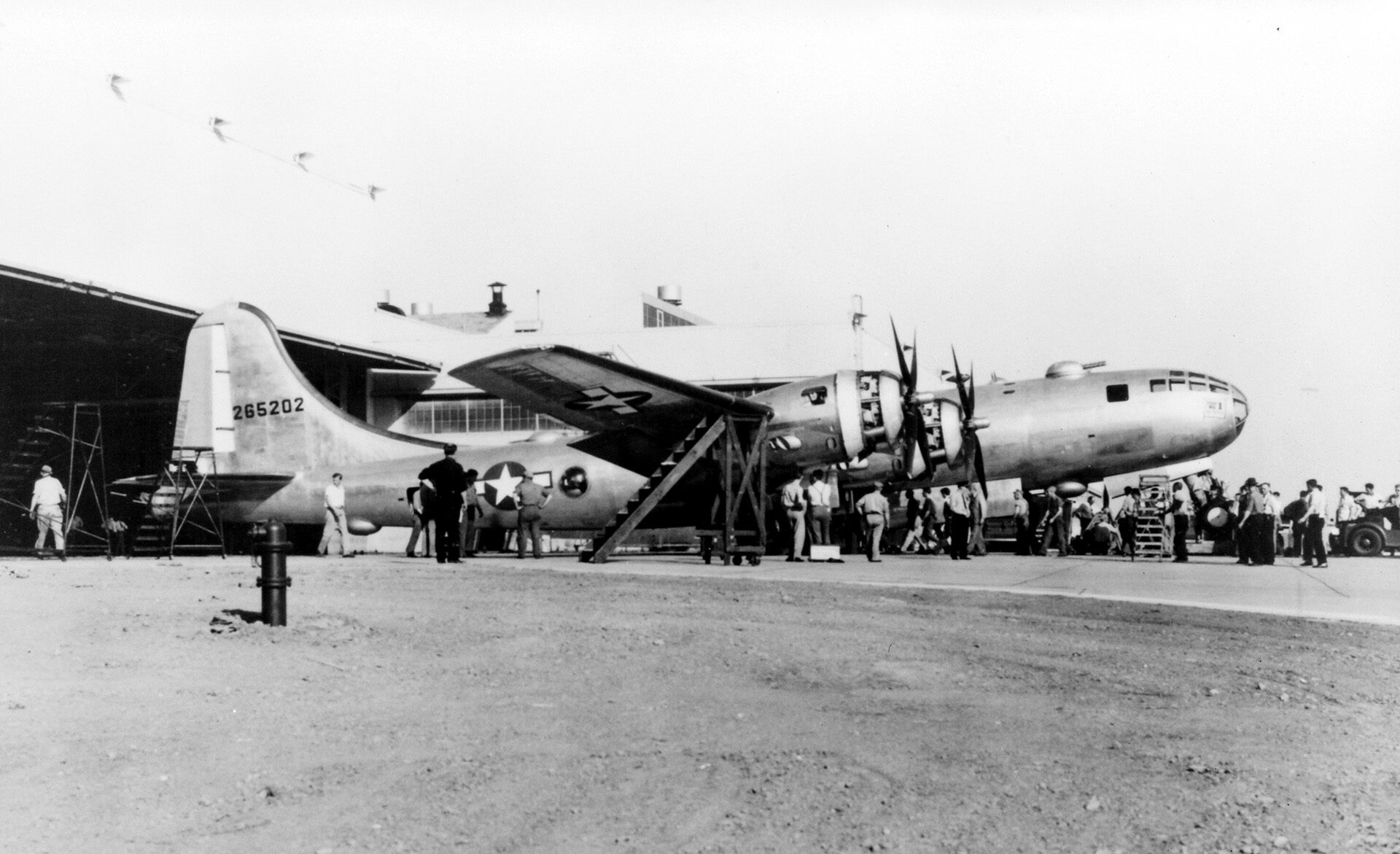
It was to fly 10,000 miles at 300 miles per hour with a ceiling of 36,000 feet. Consolidated Aircraft won this contract, and began development on a six-engine aircraft, with a wingspan of 230 feet and a weight of 278,000 pounds.
But before this could be further developed, Boeing completed its B-29 design and included four powerful Wright engines that could carry the plane its desired distance and with the prescribed payload. As it turned out, the B-29 was ready before the bases from which it would have to fly were in American hands.
No other aircraft ever combined as many technological advances as the Boeing B-29 Superfortress. It is remembered as a gigantic airplane, one that was produced in large numbers—about 4,000 in total. It is also the only aircraft that dropped atomic bombs and conducted the fire-bombing of Japan.
Even before the war, American strategists understood that it would be far harder to bomb Japan than mainland Germany and Italy. The Japanese home islands are surrounded by concentric archipelagoes, all fortified and defended by hundreds of thousands of veteran Japanese troops and dozens of fighter bases. Even those few fields in friendly hands in China and India were simply too distant for any of the current bombers to reach Japan and return.
By 1944, Japan was clearly losing the war, but its home industries were still producing more combat aircraft than at any time previously. Even as Berlin lay in ruins, Tokyo remained largely untouched by the war. For the American strategists, the only solution was to develop an ultra-long-range heavy bomber with a range of more than 3,000 miles and a bomb load of 20,000 pounds.
As noted, work on such an airplane had begun even before the war, when in October 1938, the Boeing Aircraft Company had begun work on just such a plane. That year the Chief of the Army Air Corps, General Oscar Westover, had issued a requirement for a super bomber to replace the recently developed Boeing B-17 Flying Fortress heavy bomber. One of the backers of this new project was General Henry H. Arnold, who later succeeded General Westover.
Boeing had begun working on the project that year, and, despite Congressional disinterest, kept the project alive despite financial and technological problems that plagued the development of the B-29 throughout its existence.
The ensuing development of the B-29 turned into a very expensive program—even more than the entire cost of the Manhattan Project, the program that created the atomic bombs. Estimates of between one and three billion dollars are considered reasonable, depending on how cost is computed. It was the most sophisticated plane in aviation history, and it was enormous.
The first prototype flew on September 21, 1942, and mass production followed in 1944. It weighed 135,000 pounds at maximum weight, had a wingspan of 141.3 feet—larger than any existing aircraft—and carried a crew of 11, one more than a B-17.
The B-29 was armed with ten .50-caliber machine guns and one 20mm-cannon. It was pressurized, allowing it to fly at up to 36,000 feet, and could carry a payload of 20,000 pounds. Top speed was 390 miles per hour and its range was 5,333 miles. If the Americans could get close enough to Japan, this aircraft could bomb the Japanese Home Islands with impunity. Neither antiaircraft fire nor enemy fighters could reach the heights or speed of the new super bomber.
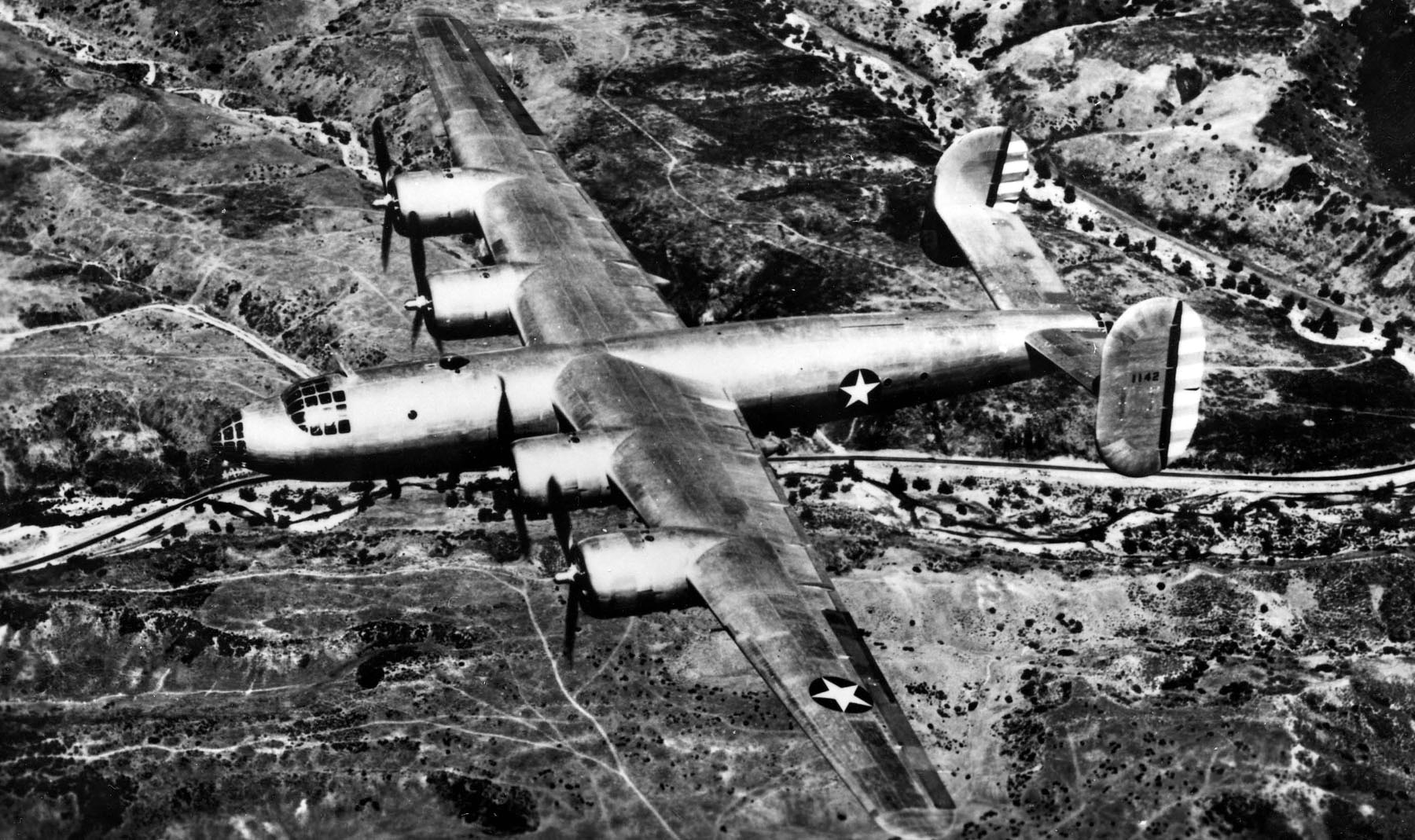
Problems galore
But there were problems. A B-29 burned between 400-500 gallons of high-octane aviation fuel per hour, creating logistical headaches. Keeping the four Wright R-3350-23 Duplex-Cyclone turbo-supercharged engines in tune was an ongoing headache. The computerized gun systems all required constant maintenance, expensive spare parts, and specially trained ground crews.
More than 60 factories across the United States contributed parts to the completed aircraft. But before they could be given over to the Army Air Force, each one had to be flown to a modification plant in Salina, Kansas, where problems in each individual aircraft were repaired and systems upgraded.
Pilots, even experienced bomber pilots, had difficulty flying in what they called the “fishbowl”—the nose canopy. General Curtis E. Lemay, soon to command the largest fleet of B-29s, was heard to remark that the B-29 “had as many bugs as the Entomological Department of the Smithsonian Institution. Fast as they got the bugs licked, new ones crawled out from under the cowling.”
Yet, over time and with continued difficulty, the aircraft became more and more reliable. The plane flew and was capable of the necessary range and payload required by the strategists. By June 1944, it was in combat.
For the leaders of the Army Air Force, the new aircraft required a new command. This was the 20th Bomber Command under Maj. Gen. Kenneth B. Wolfe. An advance group had been sent to India at the end of 1943 to prepare bases for the new command, and, in April 1944, 20th Bomber Command arrived in India with the first B-29s. With fields in India and western China, the plan was to begin bombing Japan as soon as possible.
But once again, problems arose. Supply to both India and China required long logistical lines, and in the case of China this included the long and dangerous flights over “The Hump,” the Himalaya Mountains, subject to interception by the Japanese. The situation required that the B-29s do their own logistical flights to keep the 20th Bomber Command supplied. For a B-29 to perform one combat mission, six round-trip logistical flights had to be flown over “the Hump.”
The first mission was flown on June 5, 1944, from Indian bases near the Bay of Bengal against railroad targets in Bangkok, Thailand. Ten days later, the first target within Japan, the Imperial Iron and Steel Works at Yawata, on Kyushu Island, was attacked. After stopping in China to refuel, only 47 B-29s reached the target. Only 15 of those could see the target and bombed with minimal results. Seven planes and 55 men were lost.
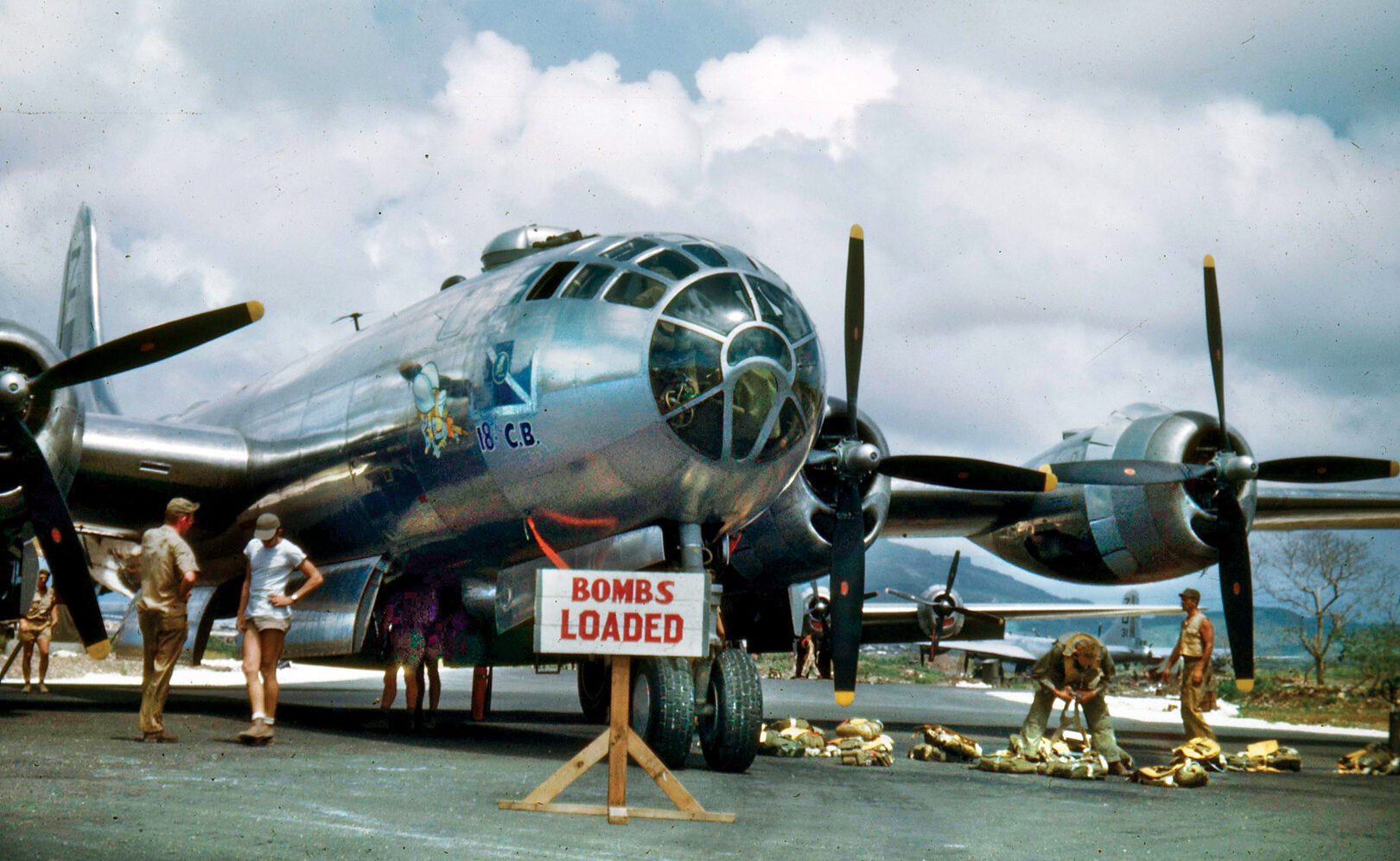
B-29s go to war
But the B-29s were finally in the war. These night raids continued despite increasing problems, including intense heat that overheated the planes’ engines while idling, hail as large as eggs, monsoons, high humidity, which shorted out wires in the planes’ delicate electrical system, and instrument failure due to these conditions. Logistical needs continued to be a major concern.
In July 1944, General Wolfe was ordered home to a new assignment. His deputy, Brig. Gen., La Verne “Bloody” Saunders, held temporary command through September. Then, Maj. Gen. Curtis E. LeMay, at 38 years of age the youngest two-star general in the Air Force, arrived to assume command.
Curtis Emerson LeMay was born in Columbus, Ohio, in 1906, and received his engineering degree from Ohio State University in 1927. He was commissioned into the Army Air Corps two years later and rose steadily within its officer ranks until by October 1943 he was a brigadier general commanding the 3rd Bomber Division flying combat missions over Germany. These included the deadly raids over Regensburg, Schweinfurt, and other costly operations. Promoted to major general, he was ordered to India to assume command of the 20th Bomber Command.
Throughout the early war years, the leaders of the U.S. Army Air Force were convinced that the way to hit the enemy hardest was with precision daylight bombing. Many of the leaders of what one historian has called the “Bomber Mafia” were convinced that by proving the worth of strategic bombing, they could convince Congress that an independent Air Force, like the British Royal Air Force, was necessary, and that they would receive the accompanying benefits of such a creation.
They had adopted the Norden bombsight, a precision instrument developed by Carl L. Norden, and claimed that it could drop a bomb into a pickle barrel from 30,000 feet. So convinced were they of the accuracy of this weapon that they refused to join the British night attacks on Germany, insisting that their own precision bombsight would destroy Germany’s ability to wage war more quickly, and with fewer casualties, than the British area bombing methods. But that did not happen.
Problems quickly surfaced, and the bombsight’s accuracy was affected by mechanical and human factors, not to mention enemy opposition in the air. Plus, to use the sight, one had to be able to visually see the target, something not always possible over cloud-covered Europe or, later, Japan. As a result, targets like Regensburg, Schweinfurt, and many others had to be attacked repeatedly, causing more, rather than fewer, American losses.
It had long been appreciated by American military leaders that the best solution to long-range bombing of Japan would be using the B-29s from an American-controlled, supplied, and secured base. The most suitable bases were at that time held by the Japanese, in the Mariana Islands. The United States Navy, Army, and Marine Corps seized these islands—Saipan, Tinian, and Guam—in mid-1944 and they were rushed to completion as air bases for an American strategic-bombing campaign against Japan.
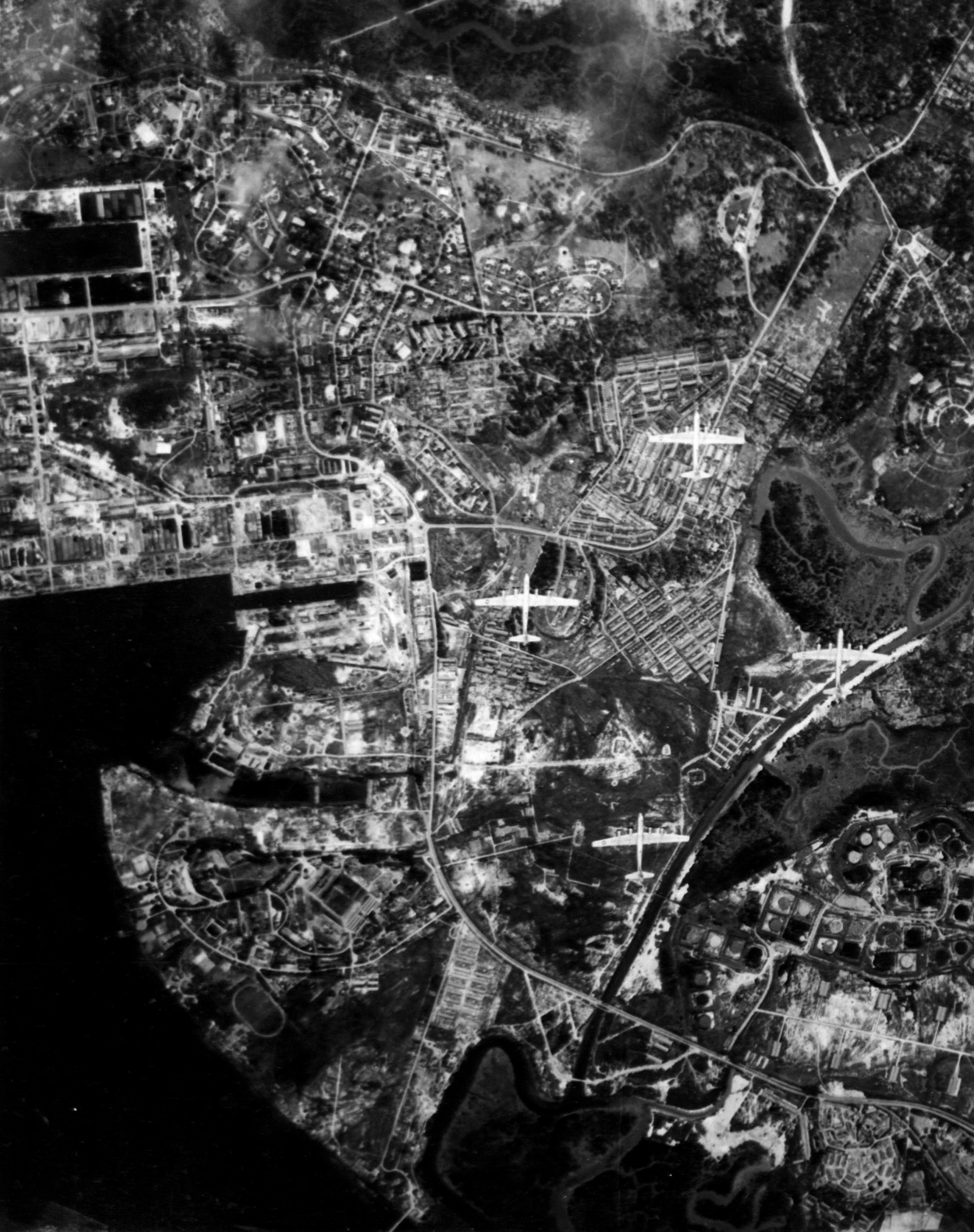
Early missions, more difficulties
The first B-29s arrived there in early September, under the command of Brig. Gen. Haywood “Possum” Hansell and his 21st Bomber Command. The first mission was a “shakedown” mission to the bypassed enemy bastion at Truk, in the Caroline Islands.
Raids on Japan itself began on November 24 with an 88-plane attack led by Brig. Gen. Emmett “Rosie” O’Donnell, covering a 1,500-mile one-way distance to Tokyo and striking that city’s Musashima Aircraft Plant. Problems with winds and other natural conditions allowed only 24 bombers to bomb the target, while the others were forced to hit alternate targets. Only 45 bombs hit within the target area. One B-29, apparently hit by a damaged Japanese fighter, was lost over Japan.
The bombers had some unique difficulties to overcome. The targets were more than 1,450 miles from their bases, requiring a long flight. That flight was mostly over water, making navigation difficult. And there were several Japanese-held air bases between the Marianas and Japan over which the bombers would have to fly, including Iwo Jima.
Finally, the physical location of Japan between the Asian continent and the wide Pacific Ocean presented unusual weather conditions—such as turbulent winds, stagnant clouds, and violent headwinds—that the bombers would have to overcome. On occasion, pilots reported that winds were so bad that they had to approach their targets downwind, or that winds were so strong that their planes were held motionless in the air. Tail winds propelled the huge planes as fast as 450 miles per hour.
Bombardiers often had to make as many as half a dozen corrections when dropping their bombs to account for the erratic passage of bombs through layers of wind going in different directions. This was the flyers’ first indication of what later became known as the jet stream. Because of these and other considerations, results were often disappointing. On average, there were only seven days a month with clear skies over Japan.
In January 1945, LeMay left his bombers in India and assumed command of the 21st Bomber Command in the Marianas. He was succeeded in India by Brig. Gen. Roger M. Ramey.
In the Marianas, General Hansell had decided that the Japanese aircraft factories were his prime target. Reconnaissance showed that these were primarily located in and around the Tokyo area. He had launched his first mission, “San Antonio One,” with that in mind. He would later say, “The operation wasn’t as good as we would have liked, but as an initial effort, it did show it could be done. This was a very doubtful issue at the time.”
Repeated efforts produced no better results, and little damage was being done to the Japanese aircraft industry. The clouds, winds, and weather over Japan made it far more difficult to effectively use the Norden bombsight than it had ever been over Germany.
One bombardier turned to his pilot and said, “I can’t get this damn telescope on the target … and so we called the radar operator to check our ground speed and … he came back and he says we’ve got a 125-knot tailwind. He said we’re going about 480 miles an hour. It’s impossible—it can’t be. There’s no winds like that.” But there were, over Japan, and that made the use of the Norden bombsight problematic.
General Hansell’s chief of staff, Colonel John B. Montgomery, tried to persuade the general that they would have to bomb lower and at night, but Hansell, a firm believer in the Norden bombsight and precision bombing, refused to listen to his advice. But at Florida’s Eglin Airfield, General Arnold was conducting a series of tests with the B-29—and napalm—to learn what they could, and could not, do. Other tests were being conducted at the U.S. Army’s Dugway Proving Ground in Utah.
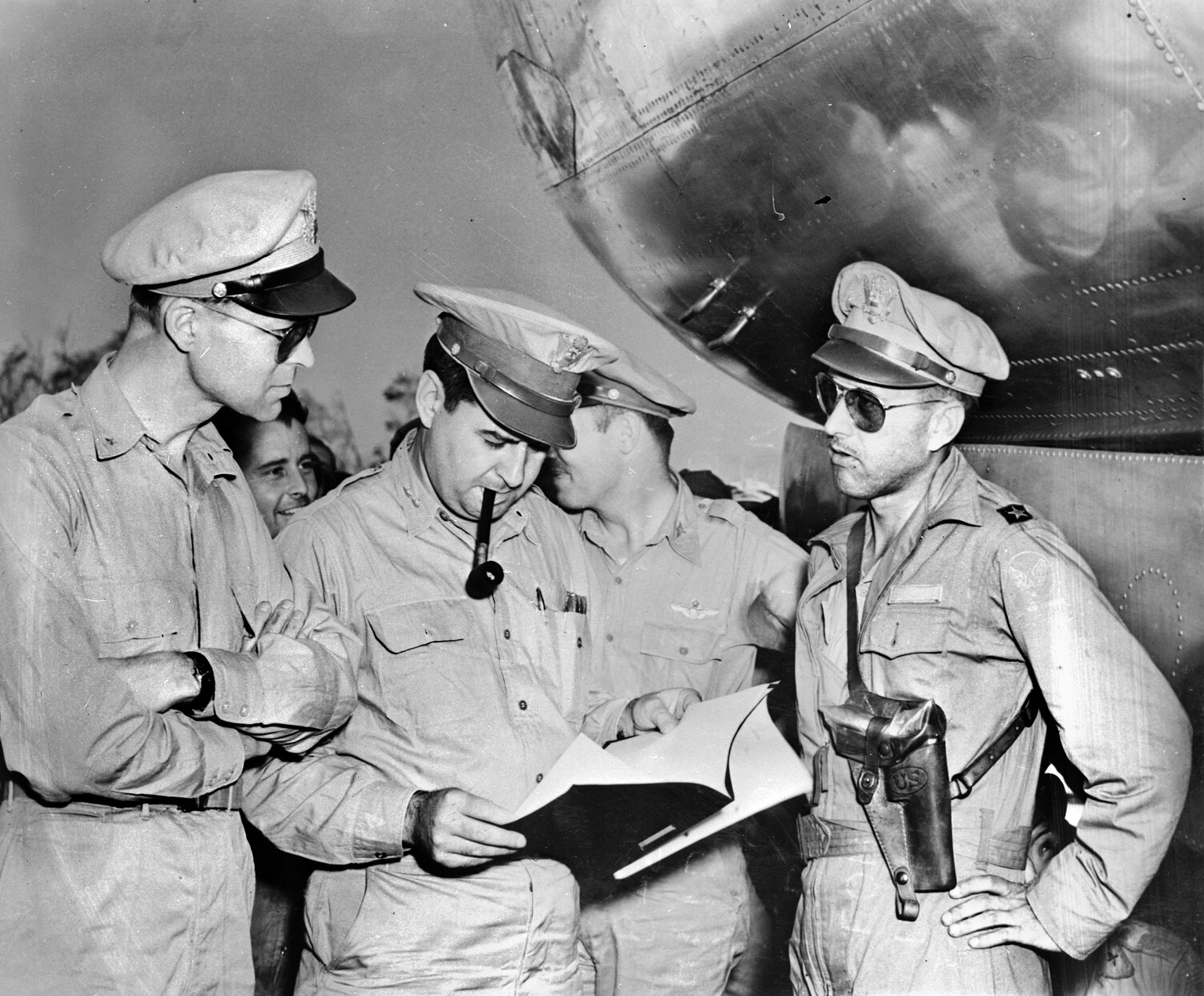
Burning down a test village
Napalm had only recently been invented when scientists, Louis Fieser of Harvard, Hoyt Hottel of the Massachusetts Institute of Technology (MIT), and E.B. Hershberg were working for the National Defense Research Committee (NDRC). They developed an incendiary gel, soon known as napalm, which stuck to whatever it landed on—roofs, walls, furniture, and skin—and burned for long periods of time. It is estimated that napalm killed more Japanese in World War II than did the two atomic bomb blasts.
To determine the effects of napalm, in March 1943 an area of the Dugway Proving Ground, a huge U.S. Army post and desert wasteland about 90 miles southwest of Salt Lake City, Utah, was selected for a test. The Standard Oil Company was contracted to create a million-dollar, full-scale model of both a German and a Japanese town on which the new munition could be tested.
In total, a dozen Japanese-style dwellings were constructed, along with six German buildings, in just 44 days. Every effort was made to re-create the traditional architectural styles and building materials used—right down to the roofs, furniture, and floor coverings, including tatami (straw floor mats) in the Japanese homes.
As one report noted, “With the villages constructed and furnished, initial testing of the incendiary weaponry began on May 17, and ended on July 16, 1943, but additional tests were conducted into 1944 to refine the M-69 into cluster bombs. In total, the structures were destroyed and completely rebuilt at least three or four times … Planes dropped a variety of bombs on the structures, including the M-50 and M-52 thermite-based bomb, as well as the M-69 napalm-based bombs.”
A model of Tokyo was also built at Eglin Air Force Base near Fort Walton Beach, Florida. Conventional wisdom said that in order to destroy the city, it should be first bombed with high explosives, and then the debris could be ignited with incendiaries. But Arnold’s tests proved otherwise. Instead, it was found that the use of small napalm bombs would ignite the buildings and spread rapidly, creating an enormous fire that would quickly spread uncontrolled throughout the city.
With these results, Arnold ordered a new attack on the Japanese city of Nagoya, center of the aviation industry. Hansell protested, but to no avail; he did as he was ordered, bombing Nagoya from 15,000 feet. The clusters of incendiaries were dropped too high, scattering over too large an area to make the best use of their potential.
Arnold was becoming increasingly impatient with Hansell. But on January 19, Hansell conducted an attack on the Kawasaki Aircraft Plant west of Kobe and for the first time had good results. Without any losses, he had reduced the production of that plant by 90 percent. In fact, so effective was this strike that the plant was never reopened during the remainder of the war. But it was too late. The next day General Lauris Norstad arrived to tell Hansell that he was being replaced by Curtis LeMay, coming over from India.
LeMay arrived at an opportune moment. The Navy Seabees had completed three more airfields in the Marianas, allowing for the deployment of three additional B-29 bomber wings. In addition to the pioneer 73rd Bomb Wing, LeMay now had the 313th, 314th, and 315th Bomb Wings at his disposal.
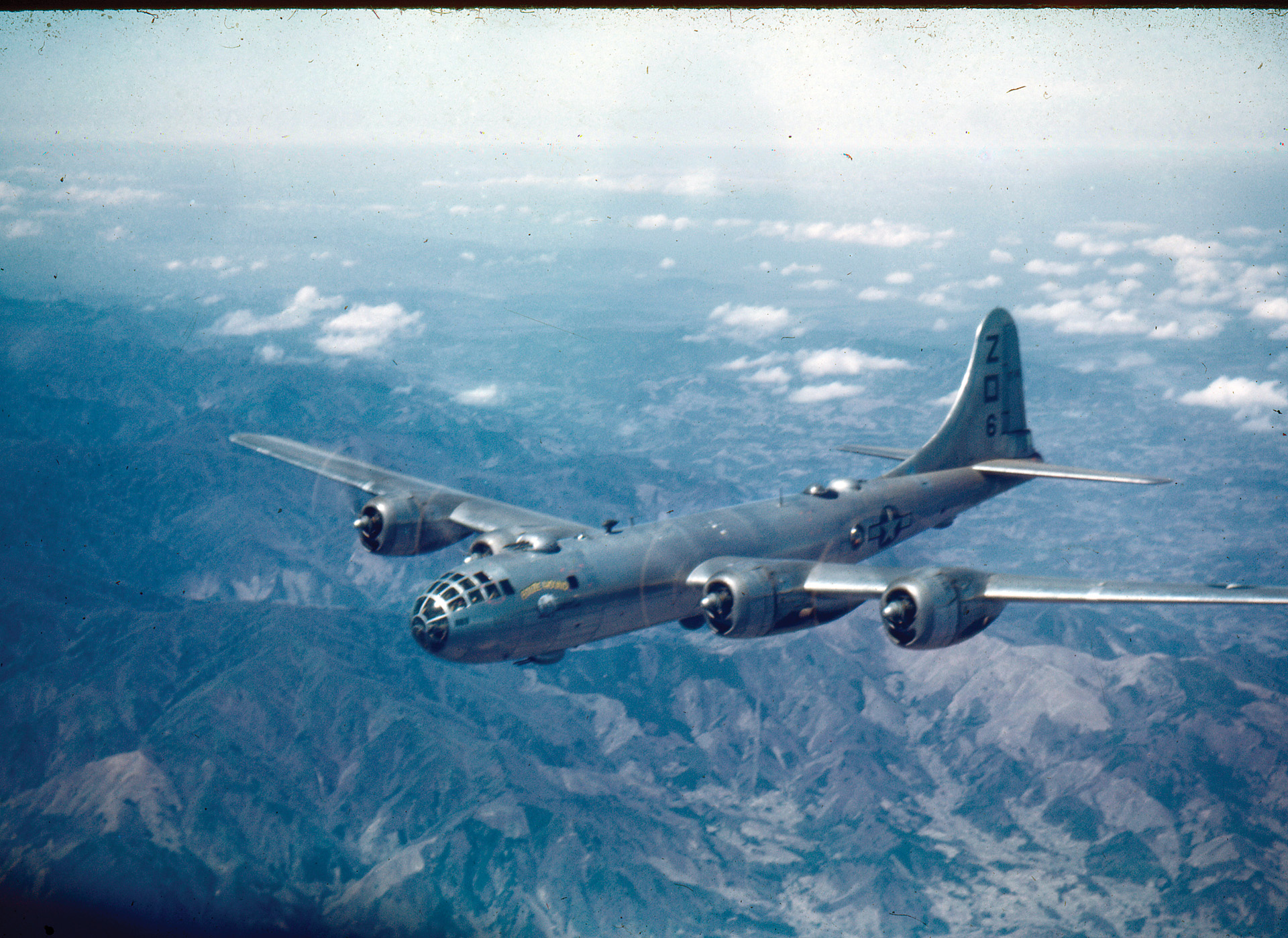
But LeMay found that the training of his crews was abysmal. They needed training particularly on the use of radar. With the usual cloud cover over Japan, using radar for bombing became even more crucial to success, so he put all wings to training full-time.
General Frank Armstrong’s 315th Bomb Wing had arrived with the latest-model radar, the AN/APQ-7 Eagle, and LeMay reserved this wing for use against critical Japanese oil refineries. He also took the highly unusual step of stripping his B-29s of weight to make them more maneuverable. Armor plate, gunners, ammunition, and most of the gun turrets were all removed.
He then trained his crews in flying the “combat box” formation that he had developed in Europe. It was a tight formation of bombers grouped together to concentrate their firepower against enemy fighters. By using this tight formation, all the remaining guns of each B-29 would support the whole flight.
This did little to improve bombing accuracy, but it did address the new danger of Japanese ramming tactics. Lately, Japanese fighter pilots, unable to shoot down the giant bombers, had taken up kamikaze tactics, ramming the B-29s and going down with them.
They had also begun to use the new “BAKA” (Fool’s) Bomb, a two-ton bomb with wings, a tail, and rocket propulsion piloted by a kamikaze pilot that was carried up to 20,000 feet and then launched against the bombers. Flying into the bomber formations at 600 miles per hour, it left the Americans without a defense against it. Fortunately, Japanese resources were so limited at this stage that the BAKA Bomb was soon unavailable to them.
For six weeks General LeMay intensively trained his crews, making few attacks on Japan. During this time, he had become convinced that incendiary attacks on Japanese cities worked only if they were mounted by a large force attacking from a low altitude. He tested this theory first on Japanese-held Saigon, Kuala Lumpur, and Rangoon and then on February 24, 1945, with an attack by 105 B-29s on Singapore, which burned out half of the huge dock area of that port.
The following day he sent 172 bombers to hit the aviation plants around Tokyo. But once again cloud cover saved most of those plants, and alternate targets were hit. Despite this, snow-covered Tokyo had about one square mile burned to the ground.
Convinced more than ever that he was right, LeMay began intensive training of his crews in low-level incendiary bombing. The crews bombed from 1,000 feet, at night, using the British technique of “maximum compression”—planes following one another at two-minute intervals and flying at the same speed, but a hundred feet higher than the preceding aircraft. This method allowed visual bombing despite weather conditions, would increase damage accordingly, and reduced gasoline expenditure, thus allowing for a greater payload to be carried.
It was believed that Japanese antiaircraft fire, effective at high altitudes, was less so at lower altitudes. Speed and darkness would replace the guns as the main armament of the B-29. With this training complete, LeMay ordered Mission 40—Operation Meetinghouse—to launch.
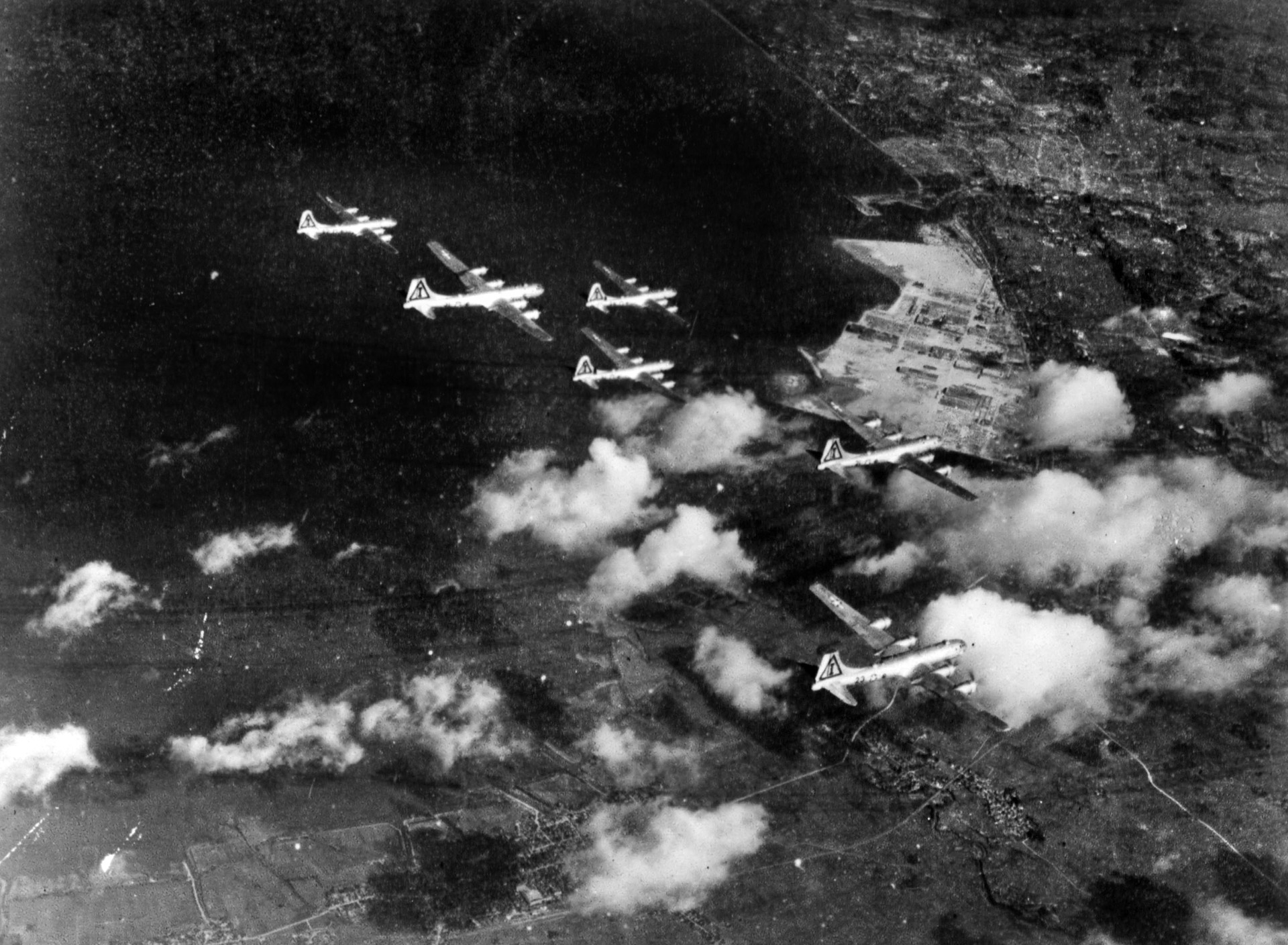
Fears by some of heavy-bomber crew casualties prompted LeMay not to request approval of his new tactics from General Arnold, but he did brief General Norstad, Arnold’s Chief of Staff, on his plans.
The target of Operation Meetinghouse was an area of about four miles by three miles in the Shitamachi District of Tokyo, and included the Asakusa, Honjo, and Fukagawa wards of the city. These included a large majority of working-class neighborhoods. Tokyo’s population of over one million inhabitants made it one of the most densely populated urban areas in the world.
There were no significant military facilities in the area, but it did contain many small factories supplying the Japanese war industries. As elsewhere in Japan, most buildings were built of wood and bamboo and were thus highly flammable. The area had suffered heavily from the large fires started during the 1923 Kantõ earthquake, and American intelligence rated Shitamachi as being the most combustible district within Tokyo.
The plan called for each bomber wing to fly at different altitudes, ranging from 5,000 to 7,000 feet, which were expected to be too high for the lighter antiaircraft guns, and too low for the heavier antiaircraft guns. Because he had knowledge of the Manhattan Project (the atomic bomb), LeMay was prohibited from leading the raid, as he had often done in Europe.
For over 36 hours the specially trained mechanics worked over the technically temperamental bombers to have as many operational aircraft as possible for this great raid. This was a successful effort, as the usual 60 percent available rate was upped to an unusual 83 percent rate for this operation.
Ground crews then loaded the planes with fuel and bombs. The units based on Saipan, Brig. Gen. Emmett (“Rosie”) O’Donnell, Jr.’s 73rd Bombardment Wing and Brig. Gen. John H. Davies’ 313th Bombardment Wing, contributed 169 and 121 bombers, respectively. The 314th Bombardment Wing was still in the process of setting itself up on Guam, and so had only 56 B-29s available.
The planes carried M47 or M69 bombs, both filled with napalm. The Saipan-based bombers each carried six-and-a-half tons of bombs, while the more distant Guam-based bombers carried four-and-a-half tons of bombs.
Instead of LeMay, Brig. Gen. Thomas Sarsfield Power would lead the actual attack. Born in New York City in 1905, he had attended Cooper Union College before enlisting in the Air Corps in 1928. Commissioned in 1929, Power had already served in the Philippines, graduated the Air Corps Tactical School, and had commanded bombing groups and wings in Europe before coming to the Pacific. Recently promoted to brigadier general, he had been awarded the Distinguished Flying Cross, Silver Star, and other decorations, attesting to his dedication to the Army Air Force.
General Power, commander of the 314th Bombardment Wing, would lead 325 bombers from the 73rd, 313th, and 314th Bomb Wings to Tokyo on March 9/10, 1945. Of these, some 279 bombers would reach and bomb the targets. Led by pathfinder squadrons that flew ahead to mark the targets with fires, the attackers were facing approximately 638 antiaircraft guns of the 1st Antiaircraft Division and 210 fighters of the 10th Air Division assigned to protect Tokyo. The latter had already been training in night attacks, and one flying regiment, the 53rd Air Regiment with about 25 fighters, had been converted to a specialized night-fighter unit.
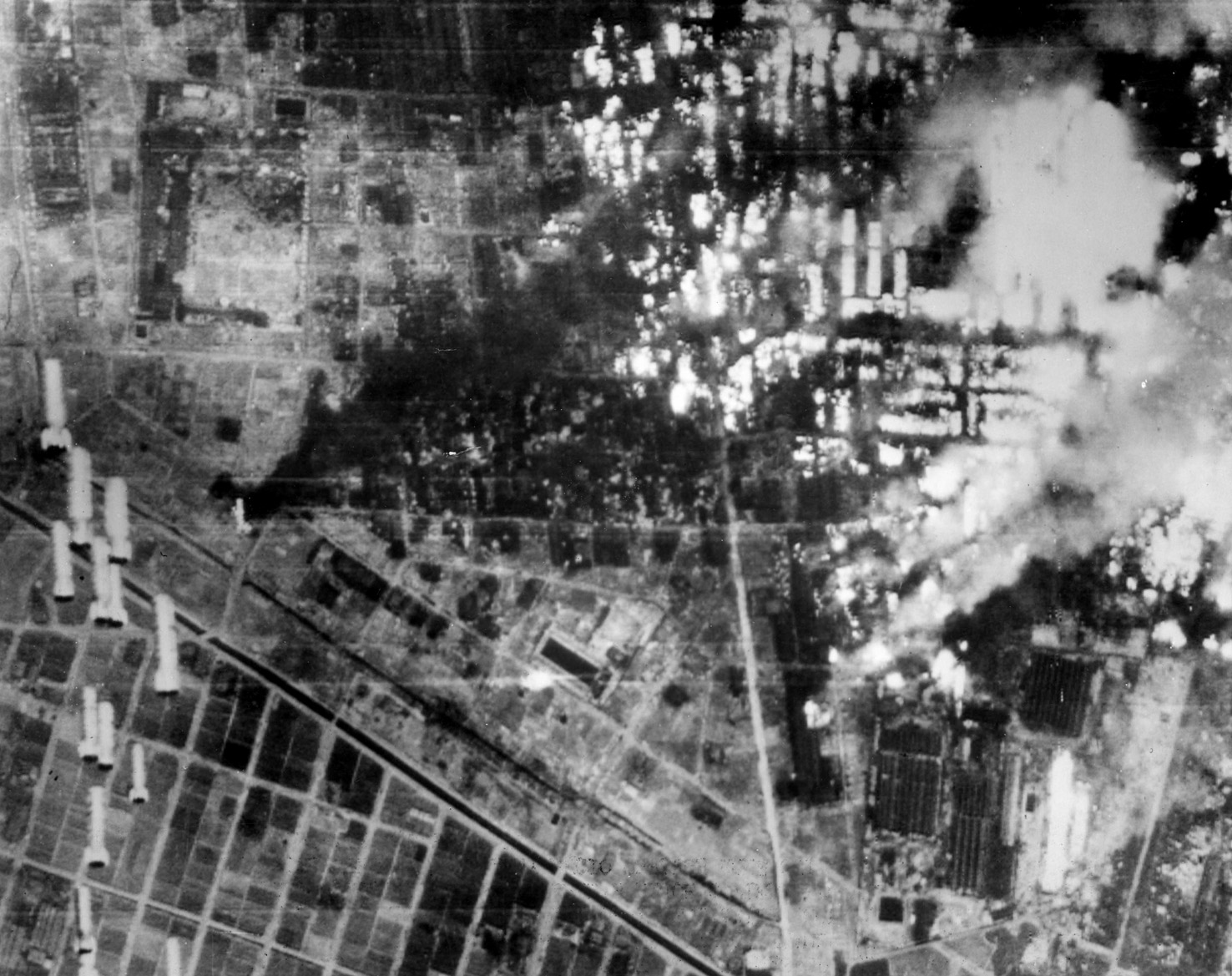
As early as March 3, the Japanese had intercepted American radio messages that indicated that the Americans of 21st Bomber Command were about to start major night bombing operations against Japan. Although this allowed the Japanese to prepare for night defense against American attacks, they did not know that General LeMay had ordered low-level attacks.
In addition to the fighters and antiaircraft guns, the Japanese had prepared an early-warning network of picket boats and radar stations, as well as lookouts to warn of incoming enemy air attacks. But shortages of radar equipment and lack of fire-control equipment for the antiaircraft guns weakened the enemy defenses.
These were under the command of General Shizuichi (Seiichi) Tanaka, a distinguished officer who had served in England, was on the Army General Staff, had commanded infantry in battle, served as head of the Military Police, served in China and the Philippines, and had recently been placed in command of the Eastern District Army in the defense of Japan. The fact that his command included the protection of the emperor’s Imperial Palace was a mark of the high regard the Japanese Army held for him.
The B-29 bomber crews were told that the purpose of the raid was to destroy the many small factories that supplied the Japanese war effort, but they were also advised that by causing many civilian casualties, the enemy war effort would be severely impacted. This disturbed many of the airmen, who felt safer at high altitudes and concerned about leaving their guns behind.
Each of the three wings was given a different altitude to bomb from, in hopes of avoiding collisions.
After taking off from their bases, the bombers approached Tokyo at altitudes varying from 4,900 to 9,200 feet. Ahead, the fires begun by the pathfinders highlighted their targets and could be seen from 50 miles away.
As they approached, the thermal currents tossed the bombers around like toys, often 700 feet high. As the bomb bay doors opened, the smell of the fires entered the bombers and stuck to the clothes of the airmen.
In addition to the antiaircraft guns and fighters, the Japanese had for three years trained the entire adult male population of Tokyo in firefighting techniques. With a city made of paper, wood, and bamboo, this was necessary even when not at war, as the Great Kantõ earthquake had shown over two decades earlier. There were also about 8,000 trained professional fire personnel divided among 287 fire stations.
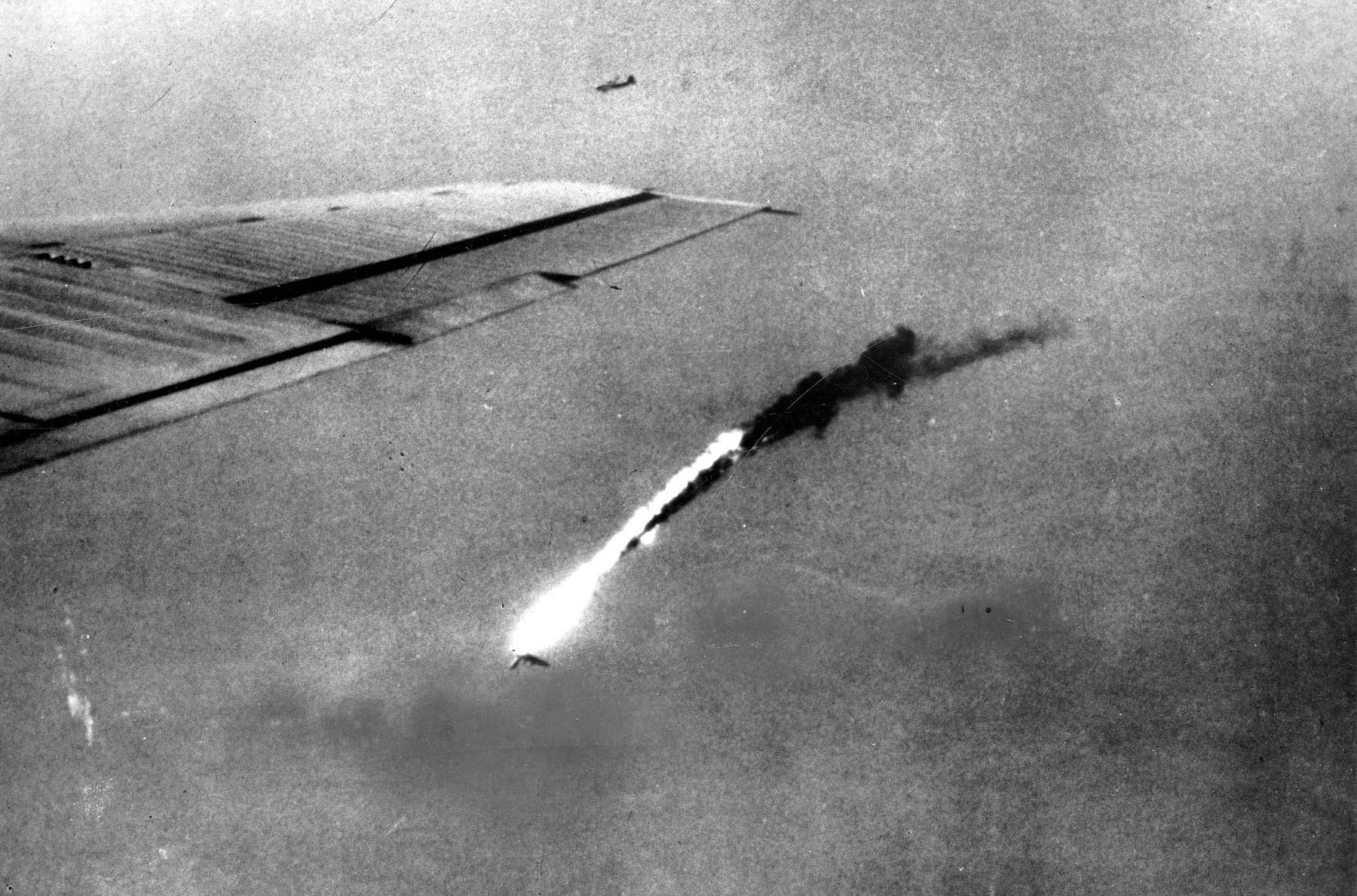
Unfortunately, they had little in the way of modern firefighting equipment and had never encountered incendiaries. The neighborhood firefighting associations were even less prepared for a major conflagration. But what was about to happen was nothing like the Japanese had prepared for in training.
The first bombs were dropped on Tokyo shortly after midnight, local time, on March 10, 1945. The increasing roar of engines of hundreds of B-29s caused many Japanese to look upward; the dark sky was orange; the color of aluminum being illuminated by the pathfinders’ fires. Suddenly the bomb-bay doors opened, and the small, cylindrical cylinders came raining out all across the great city.
The bombers created great concentric circles of fire around their aiming points. Then following groups dropped their incendiaries into those circles, and the wind did the rest. This evening it was recorded as being 30 miles an hour, creating a huge firestorm that made any attempt at controlling the fires impossible.
Water in the Sumida River, flowing through central Tokyo, and its many canals boiled, glass melted, temperatures reached 500 degrees Fahrenheit. People jumped into the water only to be boiled alive. There was nothing the Japanese, or anybody, could do. Few homes had air-raid shelters; most civilians just had a recently dug foxhole shelter for the immediate family that would give no protection from a major fire.
Over 200,000 homes had been deliberately destroyed earlier by the Japanese themselves to create firebreaks, but the rubble within these breaks had not been cleared, and simply added more fuel to an already out-of-control-situation.
As noted, pathfinder crews from the 73rd and 313th Bombardment Wings had already flown over the city and dropped their first incendiaries—M47 napalm bombs—in an “X” shape to mark the center of the target area for the following bomber stream. Each of the bomber commands had been briefed to attack a different sector of the X to maximize the effect of the bombing.
Above the growing firestorm, General Powers circled for 90 minutes, observing the results of the attack. With him was a team of map makers who catalogued the districts destroyed by the fires.
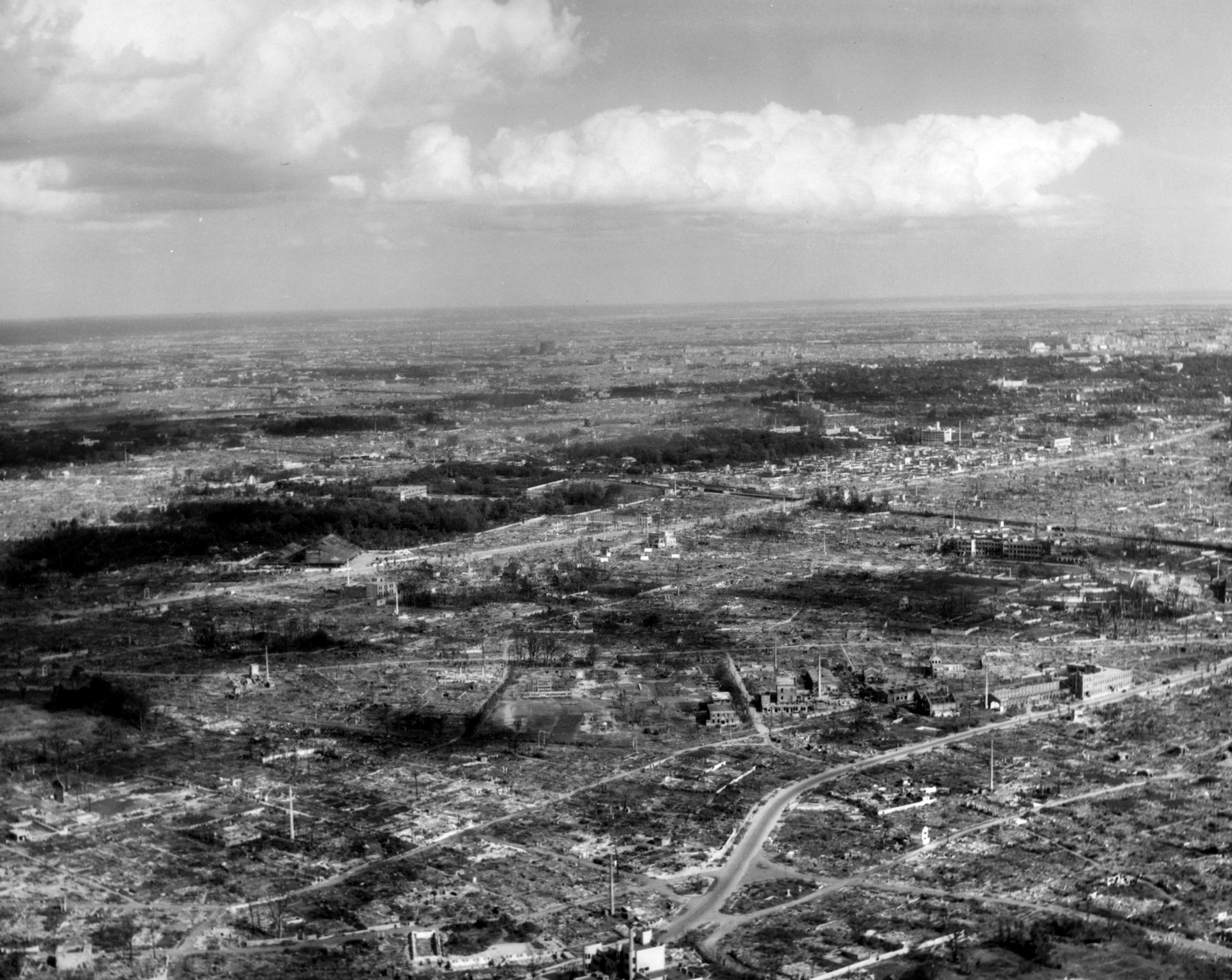
The raid continued for more than two hours and 40 minutes. Each individual bomber covered an area 2,000 feet long and 300 feet wide with its bombs. As the later bombers appeared over the city, the smoke and flame covered the targets, and the pathfinder markings disappeared into the larger firestorm. This led some bombers to bomb outside the designated areas.
The intense heat from the burning city also created updrafts that tossed these late arrivals around almost as badly as the jet stream had on earlier raids. So bad did the smell of burning become in the later bombers, many airmen had to use their oxygen masks to overcome the sickening odor.
As General LeMay had hoped, Japanese defenses were overwhelmed. No warning of the attack came until the first bombs dropped on the city. The Japanese night fighters, who had instructions not to fly until an actual raid had been reported, got off to a late start because of these instructions. Picket boats had reported the incoming attack, but communications failure had prevented the word from reaching the 53rd Air Regiment in time for them to get enough altitude to protect their city.
Some reports indicated that the early-arriving B-29s, the pathfinders, were on a reconnaissance mission, and therefore not considered an immediate threat. Other reports were simply not taken seriously, since they stated that the high-level bombers were coming in at extremely low altitudes.
It was not until well after the first bombs had dropped that the 1st Antiaircraft Division turned on their searchlights and opened fire. Most of their fire was too high or too low to seriously impede the bombers. Many gun positions soon had to be abandoned due to the raging fires all around them. Even so, a dozen B-29s were reportedly shot down by Japanese gunners.
Five crews were rescued by American submarines lying offshore. Another 42 bombers were damaged but managed to survive. In total, 96 American airmen were killed or missing, and another six wounded. Japanese night fighters were completely ineffective. Some even crashed after they ran out of fuel while searching for American aircraft.
In Tokyo, the fire was out of control within 30 minutes of the first bomb landing on the city. Within an hour, the Tokyo Fire Department acknowledged that they could not control the flames. The firemen did what they could to guide people to safety, but they lost 125 of their own, along with 500 Civil Guards assigned to assist them; 96 of their fire engines were destroyed.
The strong winds quickly spread the fire over a large area of the city and destroyed or seriously damaged every building in their path. Pre-attack instructions from authorities such as “Fight, don’t run” and “No matter what sort of air raid comes, this neighborhood association will be safe,” only led to thousands of unnecessary deaths. Civilians who remained in their homes had no chance of survival.
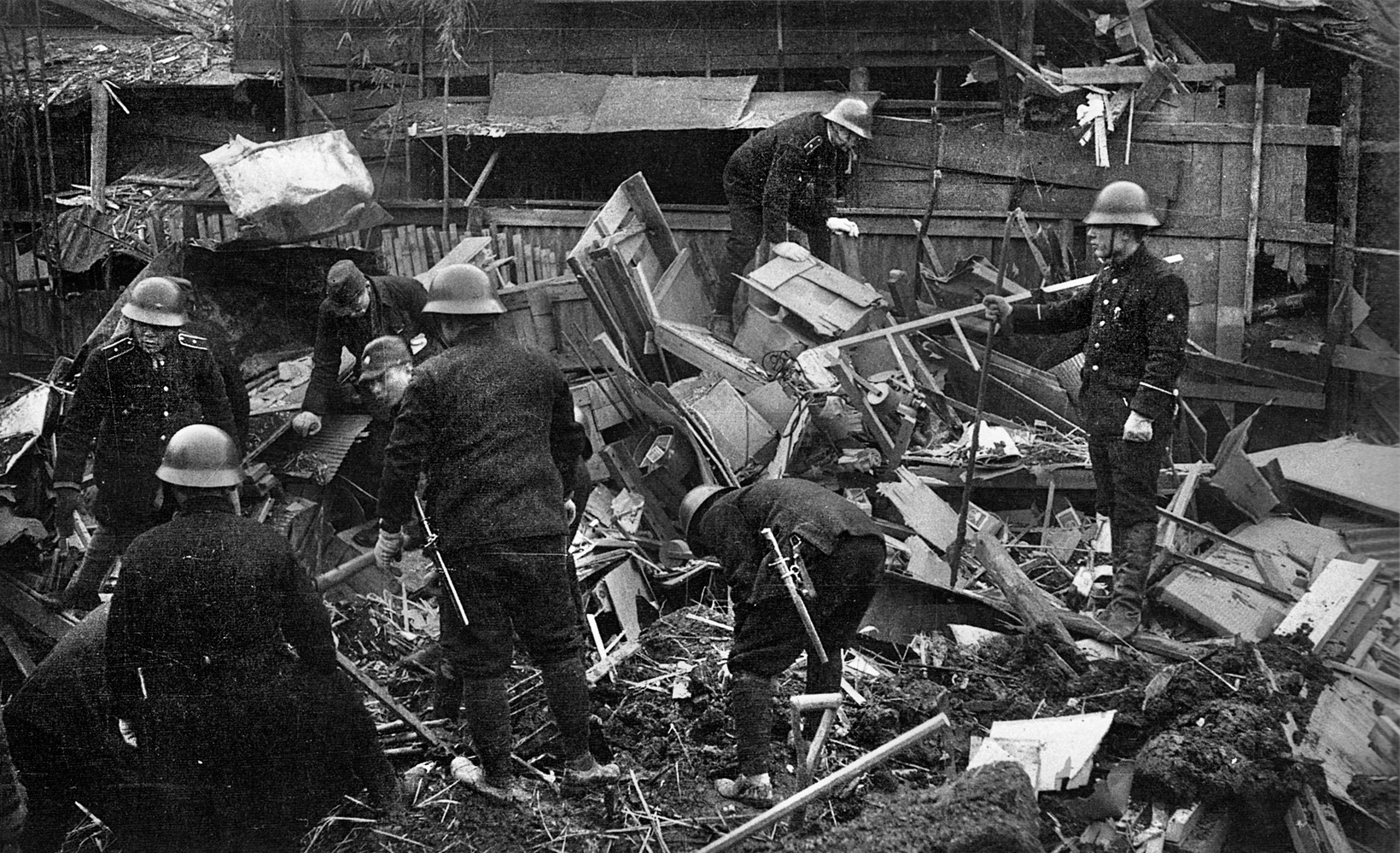
One historian has written that “the key to survival was to grasp quickly that the situation was hopeless and flee.” One eyewitness, Father Gustav Bruno Maria Bitter, remembered seeing “the first circle of fire” which reminded him of “a silver curtain falling, like the lametta, the silver tinsel that we hung from Christmas trees in Germany … and where these silver streamers would touch the earth, red fires would spring up.” Another eyewitness recalled that the incendiaries “did not fall; they descended rather slowly, like a cascade of silvery water. One single bomb covered quite a big area, and what they covered they devoured.”
Many sought sanctuary in the only water nearby, the Sumida River. This ran through the Honjo and Mukojima factory districts and drew many civilians who sought safety in the river. These people who fled could see barely 10 feet in front of them as they ran, so thick was the smoke.
One woman, Funato Kazuyo recalled, “People panicked. Running, screaming, ‘We’re all going to die! The fire is coming!’ The sound of incendiary bombs falling, whizzz, the deafening reverberations of the planes, and the great roar of the fire and wind overwhelmed us. If we stay here, we’ll die! Let’s run … Women and children follow us! Why are you hesitating?’”
Those in the river soon began to crush one another from the amount of people jumping in, seeking shelter there. The flames roared across the river, sucking away the oxygen and killing hundreds who thought they had reached safety. Some survived by hiding in sewer pipes. Others sought shelter in city parks.
The carnage was horrendous. One historian wrote, “The heat, which is reported to have reached an unimaginable temperature of 1,800 degrees in some locations, sucked the oxygen out of the air, asphyxiating those it did not simply roast to death. The clothes on people’s backs, those that weren’t on fire from the actual bombs, literally burst into flames from the heat.”
Estimates range from 90,000 to over 100,000 civilian deaths from the Operation Meetinghouse bombing alone—nearly eclipsing the number of all U.S. personnel killed in the Pacific Theater during the whole of the war. At least one million others were made homeless that night.
Of the nearly 350 B-29s that took off on March 9, 279 made it to Tokyo and dropped more than 1,665 tons of incendiaries on the helpless city. Many of the bombers that had departed their airfields in the Mariana Islands in bright aluminum silver arrived back at their bases late on March 10 covered with smoke and soot from the intense fires they had begun.
Sixteen square miles of Tokyo was a “burned empty prairie.” Not one building remained intact in the fire zone. One reporter wrote that there “was nothing but heaps of ashes, bits of corrugated iron, bricks, concrete blocks, a few twisted girders, and here and there the shell of a burned-out concrete building. Skeletons of motor vehicles, including fire engines, dotted the landscape.”
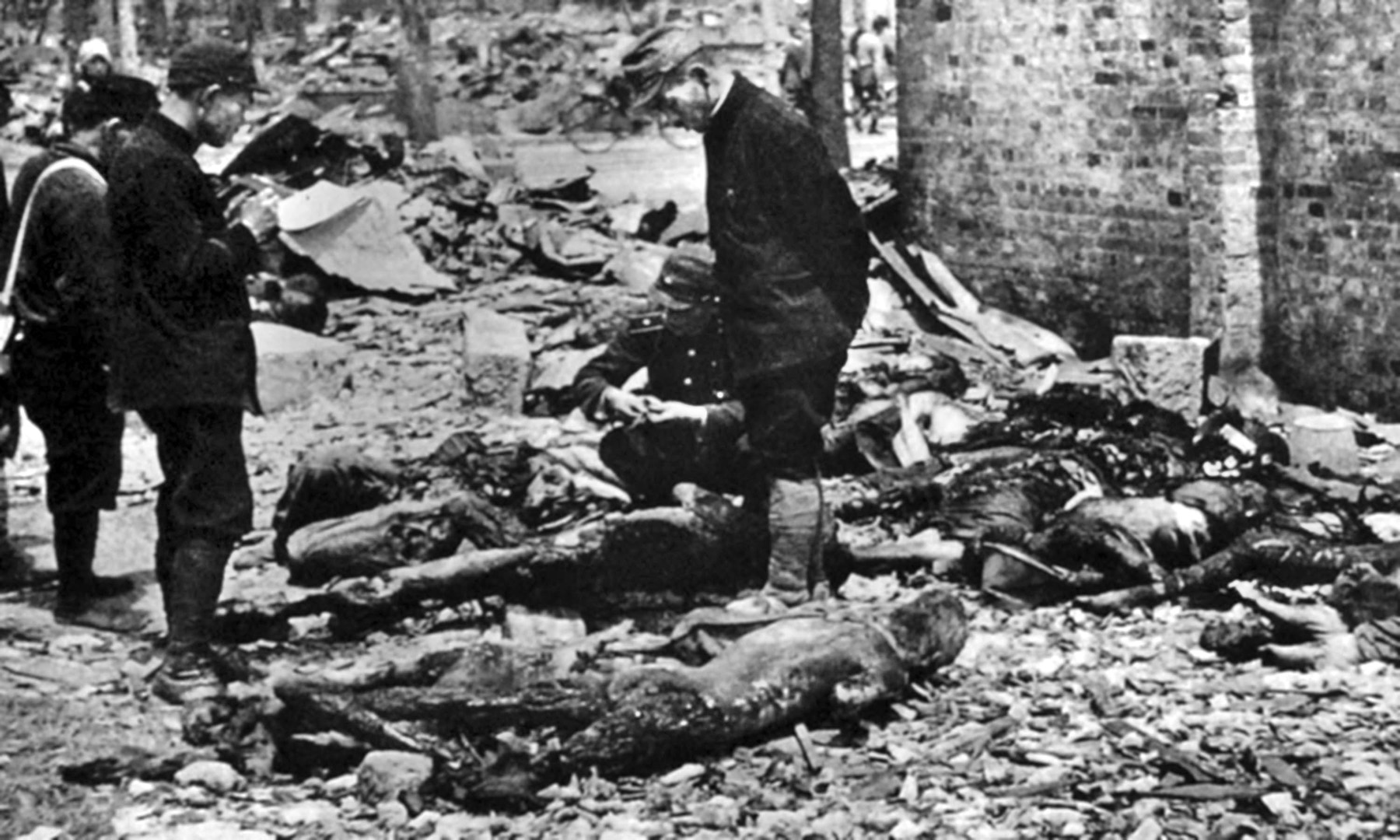
Both Generals Arnold and LeMay considered the attack a success. Photographs taken after the attack showed extensive damage. Arnold wired LeMay a complimentary message that read, “This shows your crews have the guts for anything.”
Both men regarded the firebombing of Japan, begun in earnest at Tokyo on March 10—which came almost a month after the destructive firebombing of Dresden, Germany, that took some 22,000-25,000 lives—as necessary to save American lives and destroy Japan’s war-making potential before an invasion of her home islands was launched.
Japan’s history to date had been never to surrender despite the worst odds against them. There was every reason to believe that this attitude would continue until Japan’s home islands were invaded, at great cost to both Americans and Japanese. Generals Arnold and LeMay were determined to do anything they could do to further weaken Japan and to reduce these losses.
The Tokyo raid was followed by one on Nagoya (March 11/12), then Kobe (March 17/18), and Nagoya again (March 18/19). A precision raid against an aircraft factory at Nagoya failed on March 23/24. Aware now of what they were facing, Japanese civilian casualties in these raids were far lower than Operation Meetinghouse, the March 10 raid on the nation’s capital.
There was then a lull, as the Americans had run out of incendiary bombs. In April and May, XXI Bomber Command concentrated on supporting ground operations on Okinawa. Then they returned to firebombing Japanese cities, as well as mounting precision attacks when the weather was favorable.
Tokyo was struck again on the night of May 25/26, and what remained of the city was left 50 percent destroyed, with four million people homeless. Further raids were deemed to be not worthwhile. The expensive, controversial-yet-cherished dreams of the supporters of the long-range heavy B-29 Bomber had been accomplished.
After the war, LeMay said in his memoirs, “No matter how you slice it, you’re going to kill an awful lot of civilians. Thousands and thousands. But if you don’t destroy the Japanese industry, we’re going to have to invade Japan … Do you want to kill Japanese, or would you rather have Americans killed?”
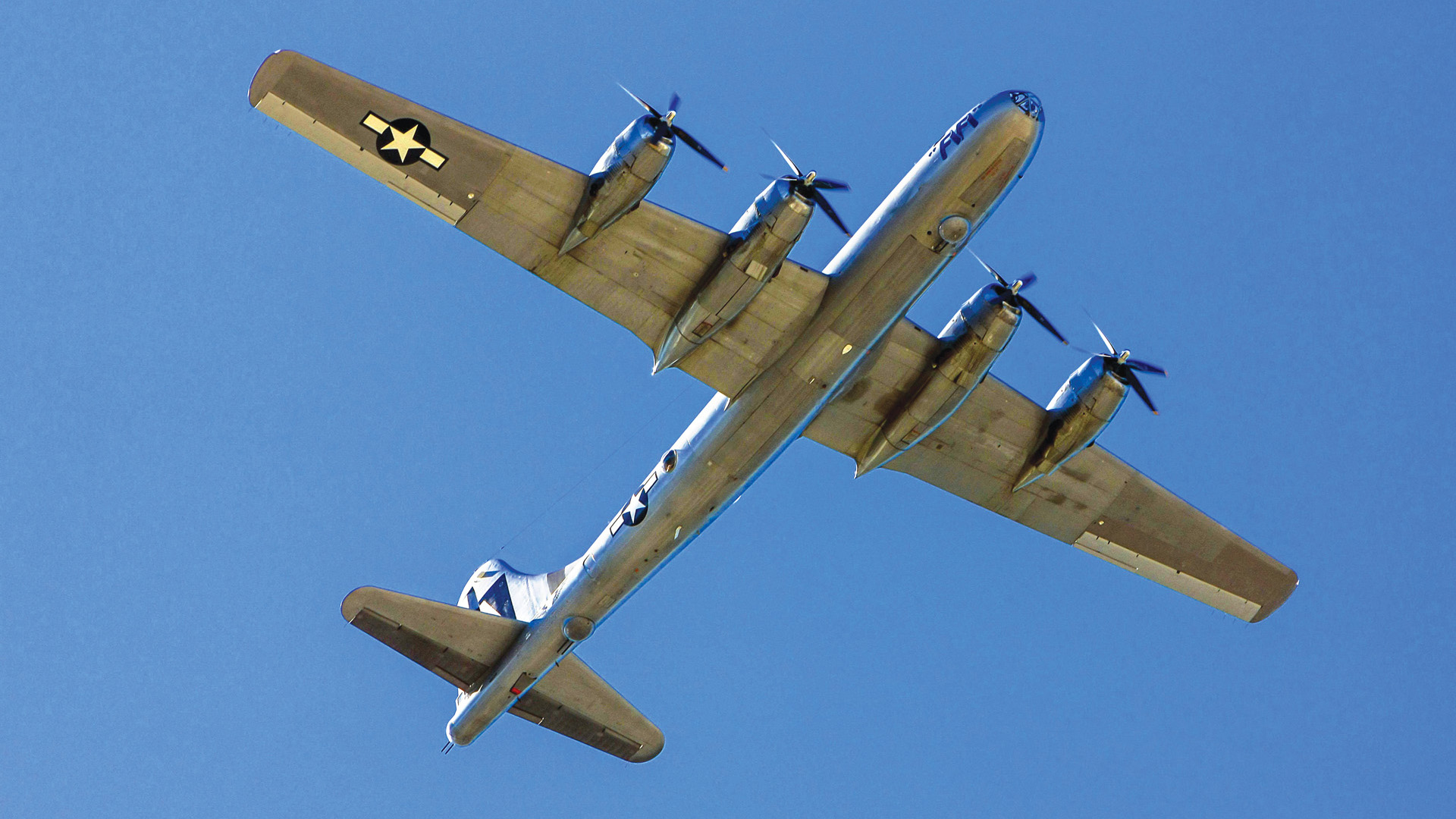
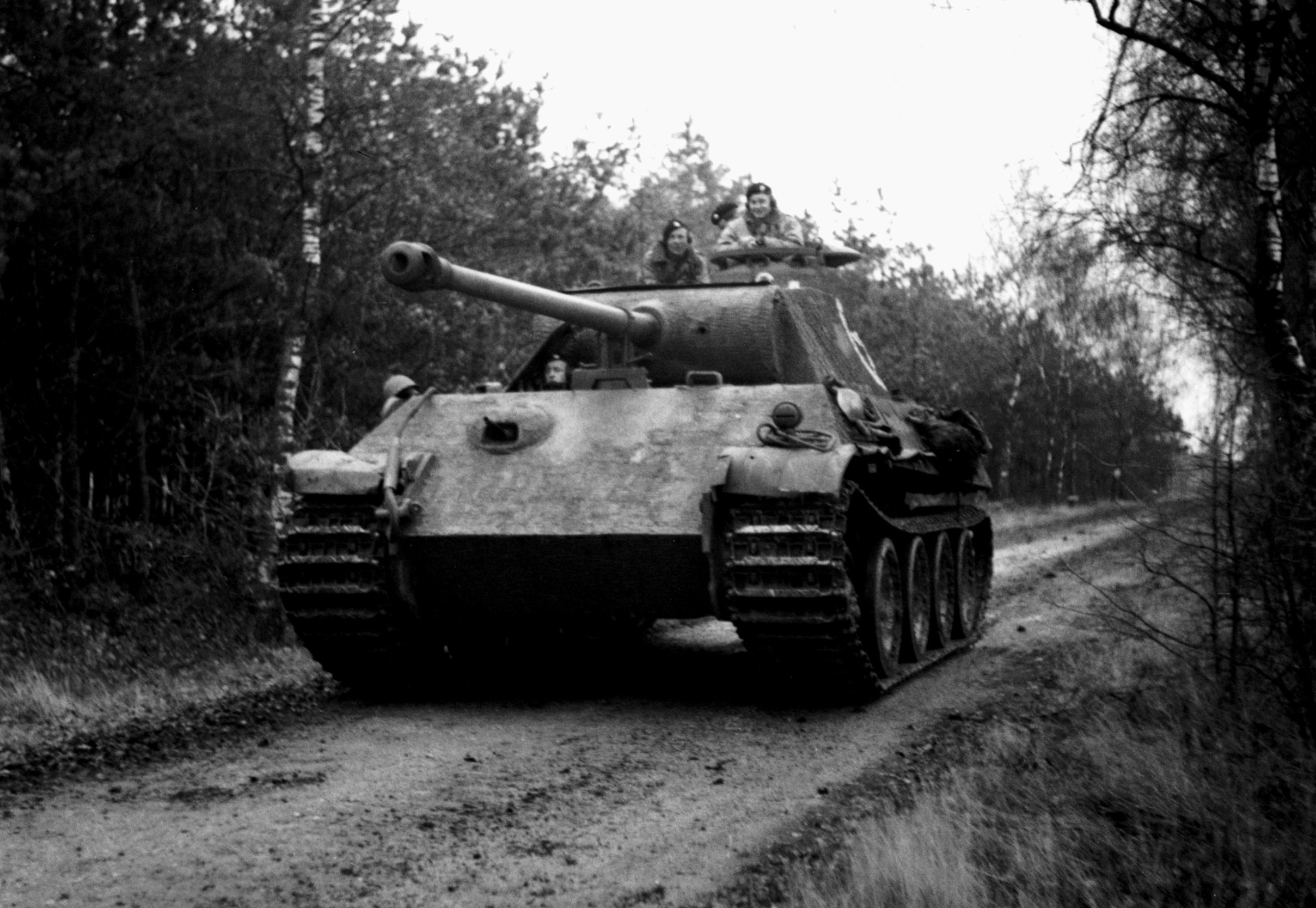
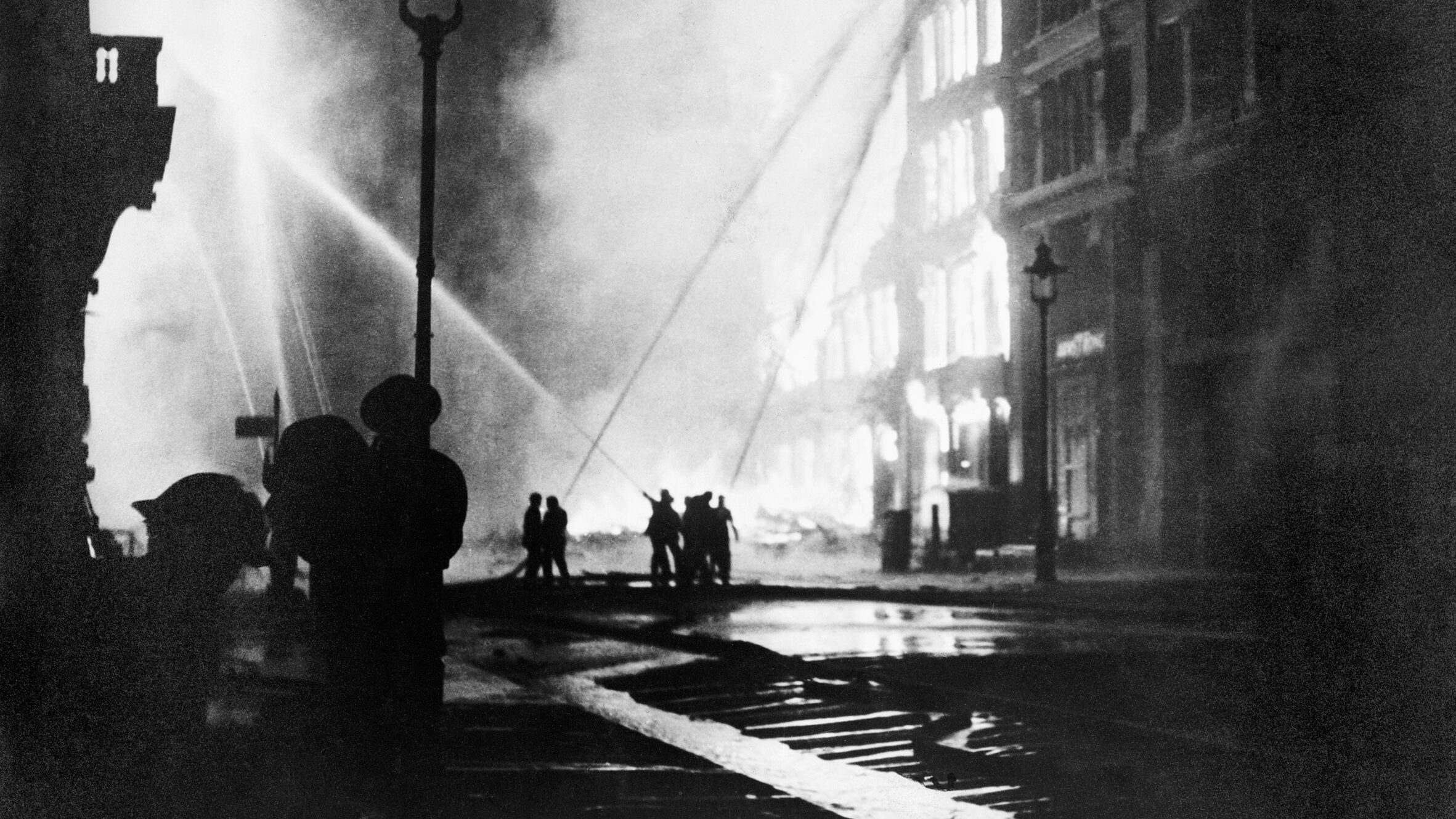
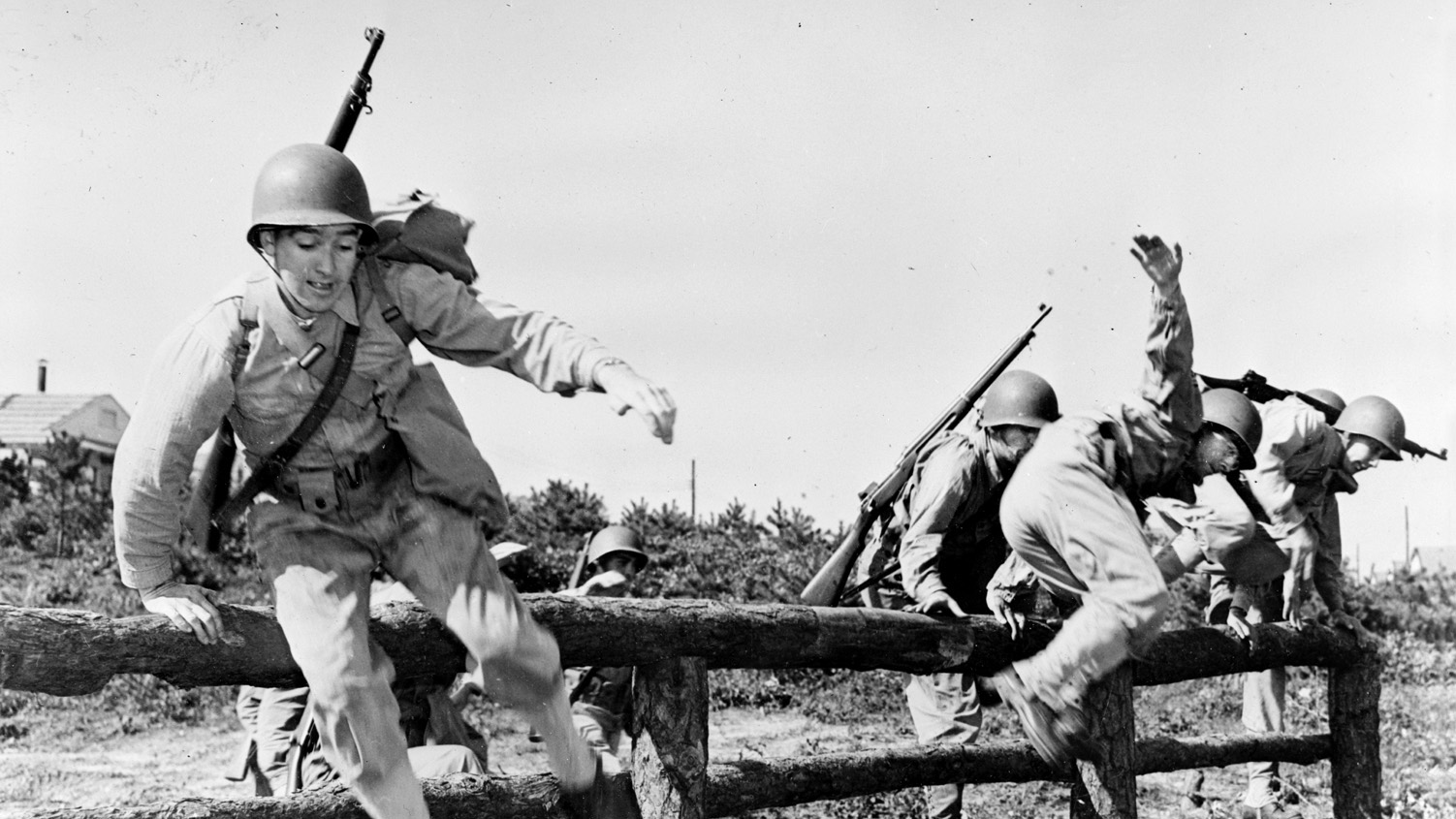
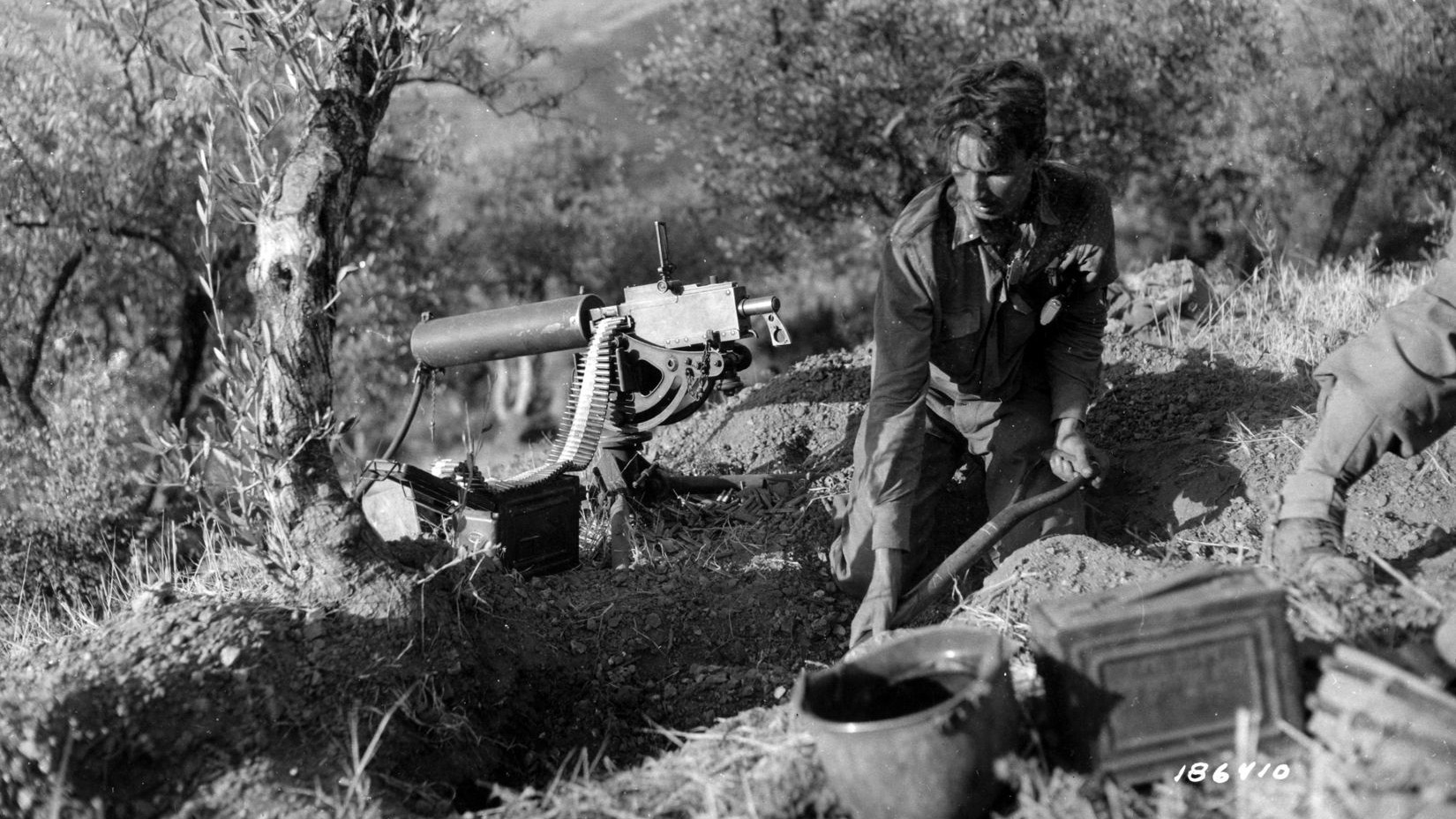
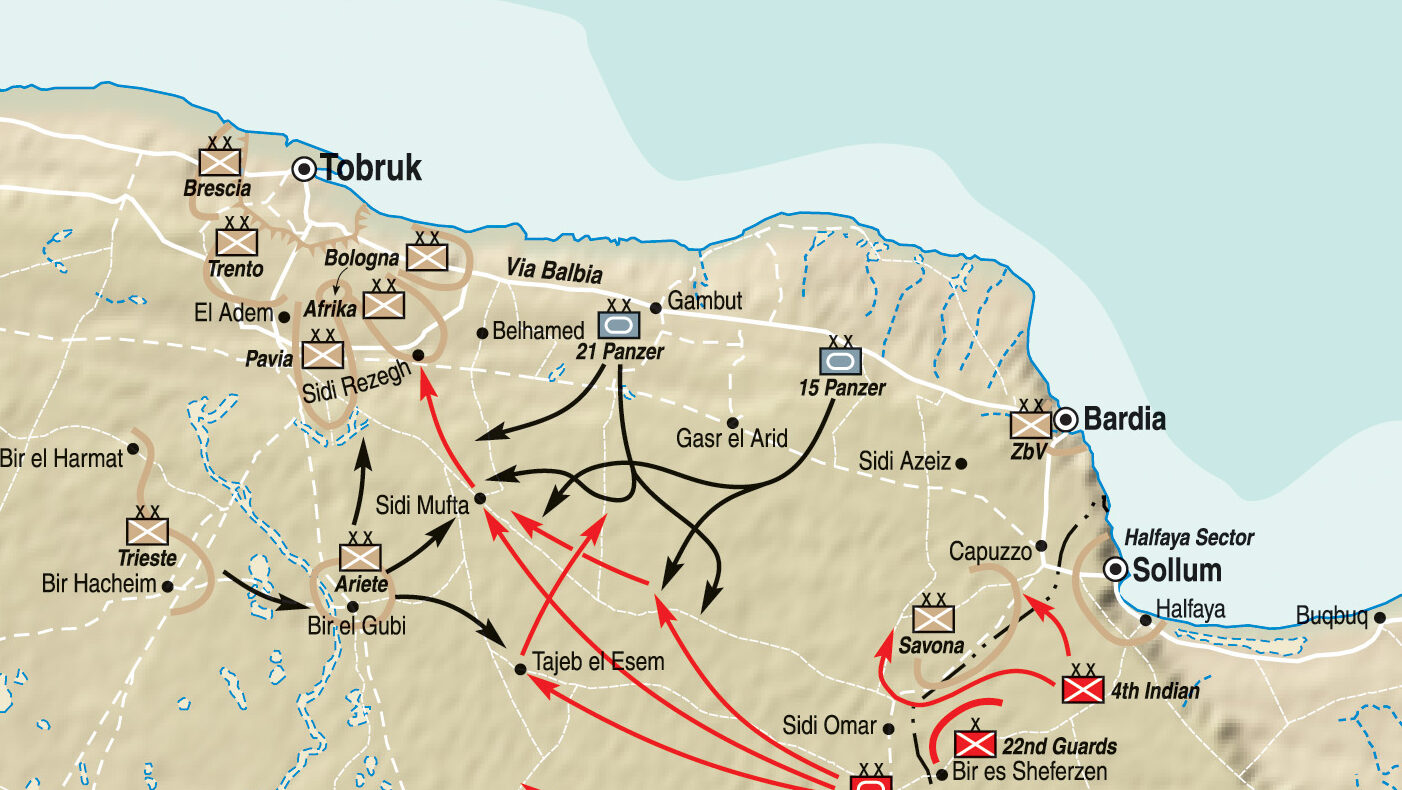
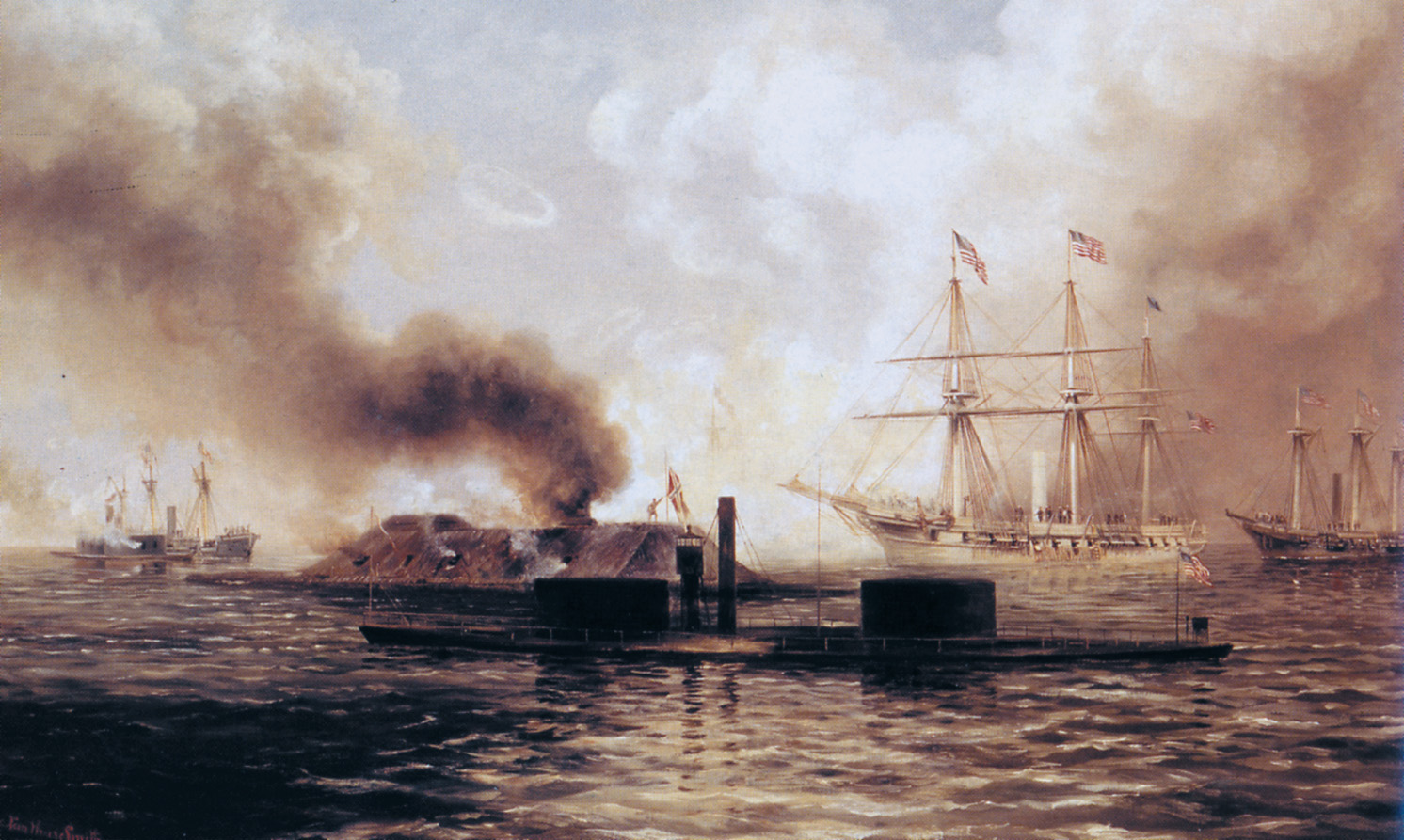
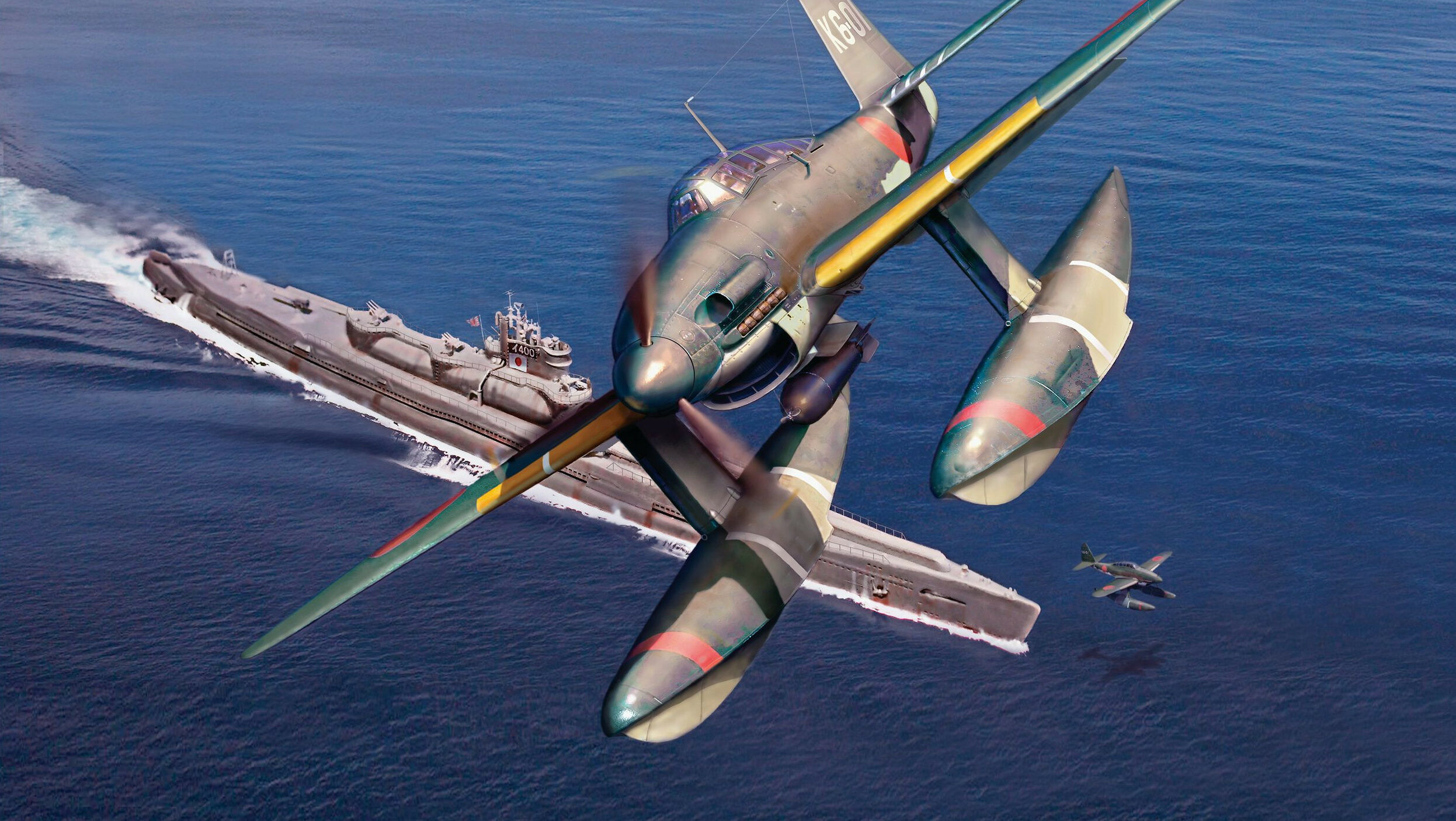
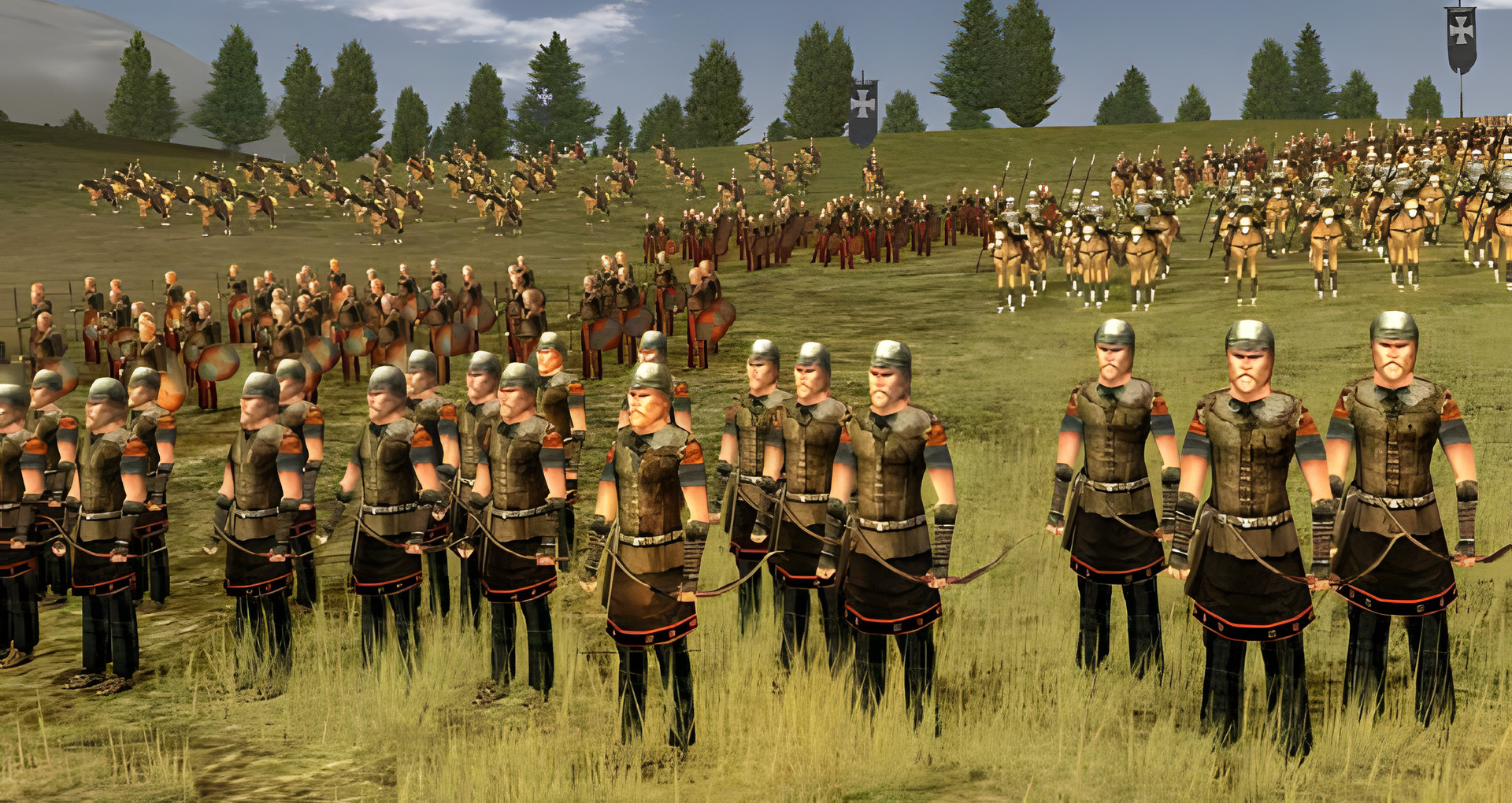
Few people realize that the fire bombing of Tokyo produced more casualties than Hiroshima. If Truman had not wanted a quick end to the war by using the atomic bombs, it is entirely possible the bombing would have driven them to the peace table over a longer period of time and without the large scale invasion that was planned. Unfortunately, such a campaign would most certainly have netted far more Japanese casualties, mostly civilian, and the almost certain execution of all allied prisoners. There were few good choices available.